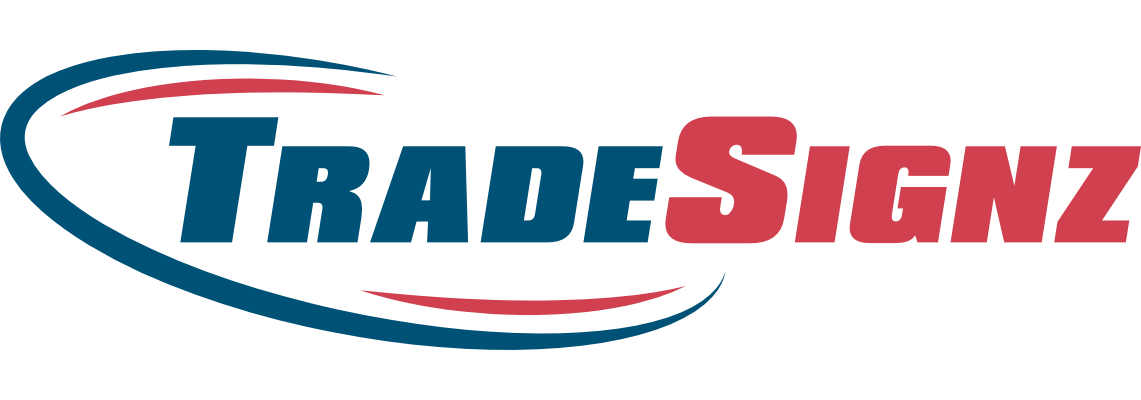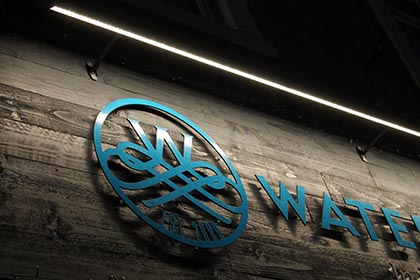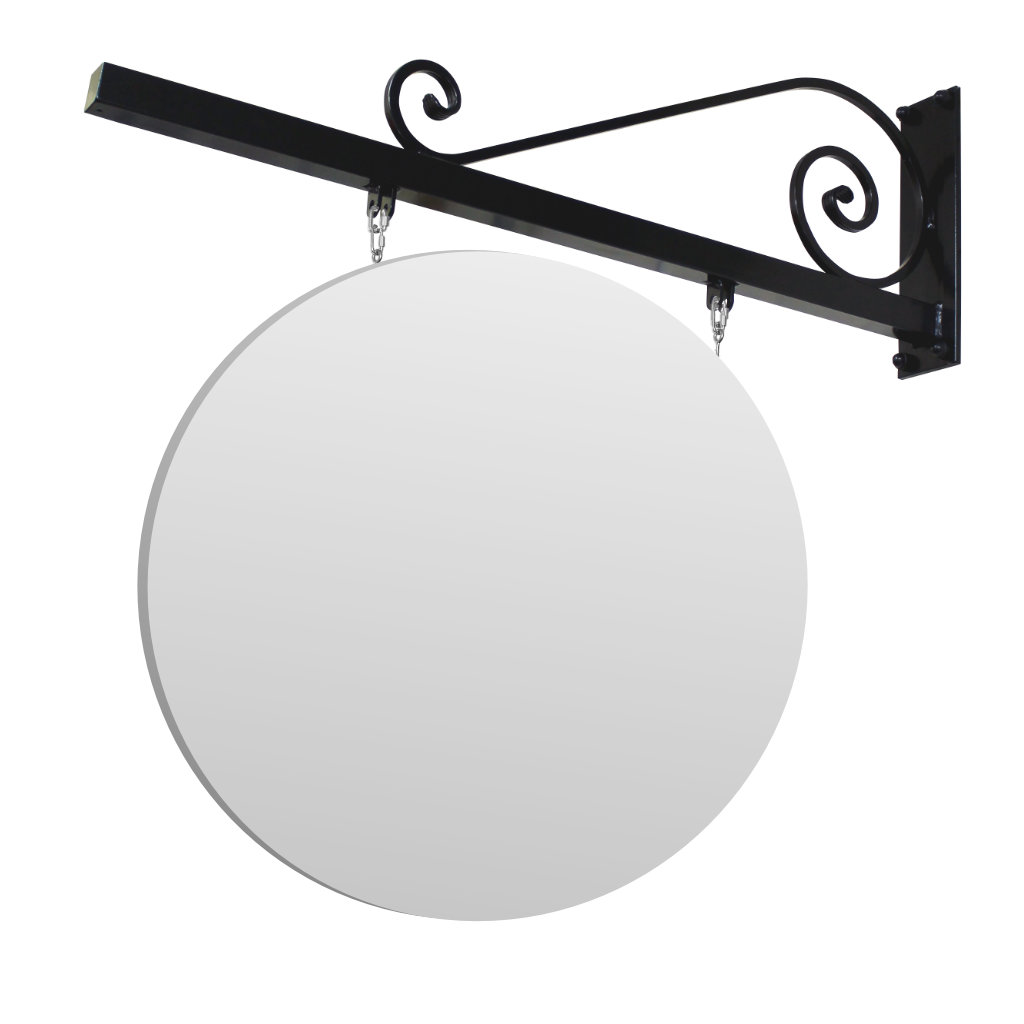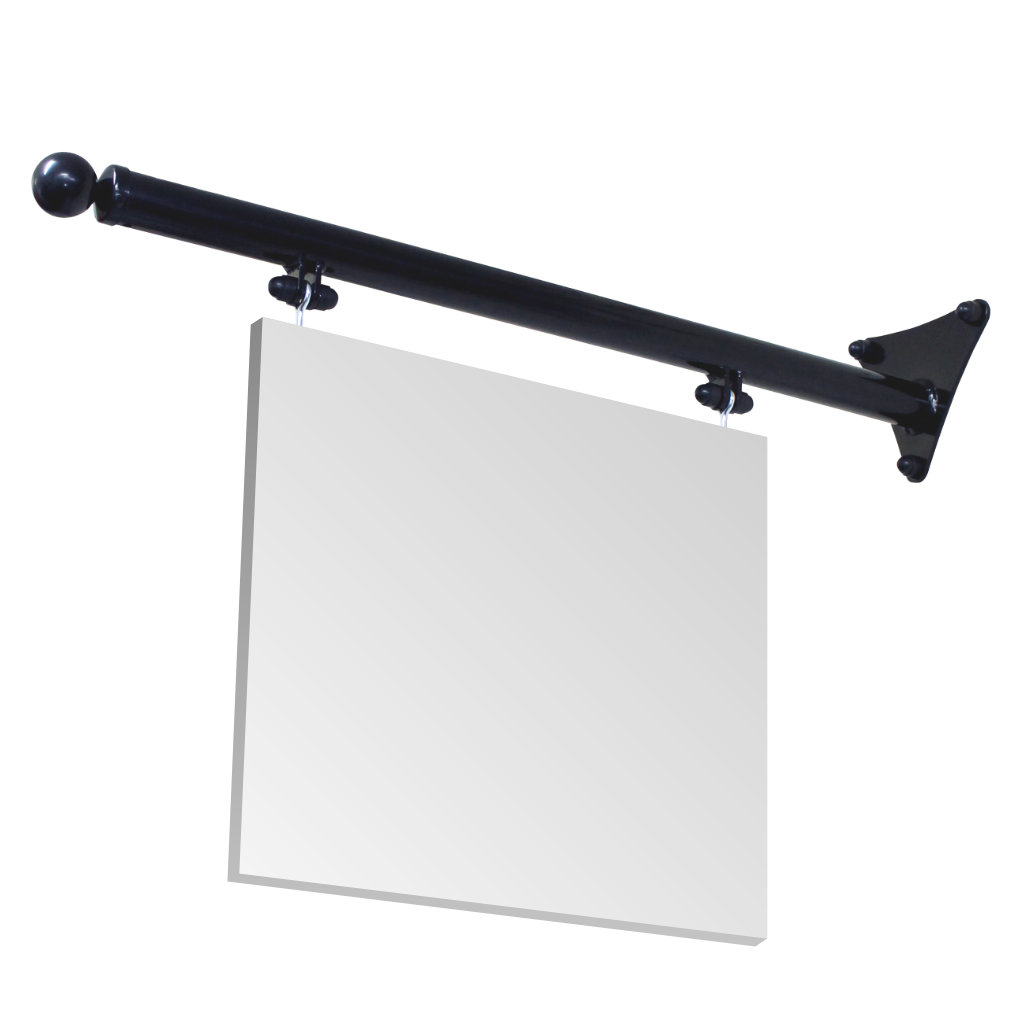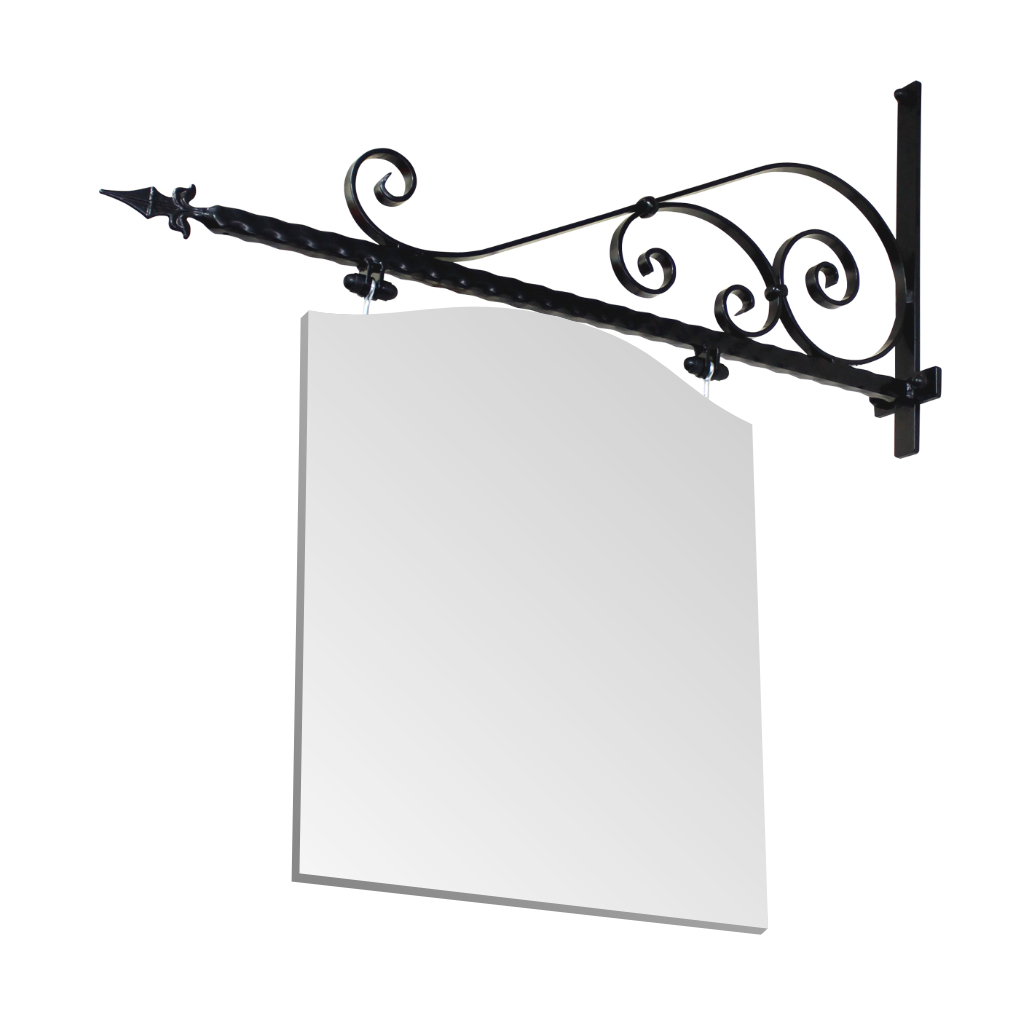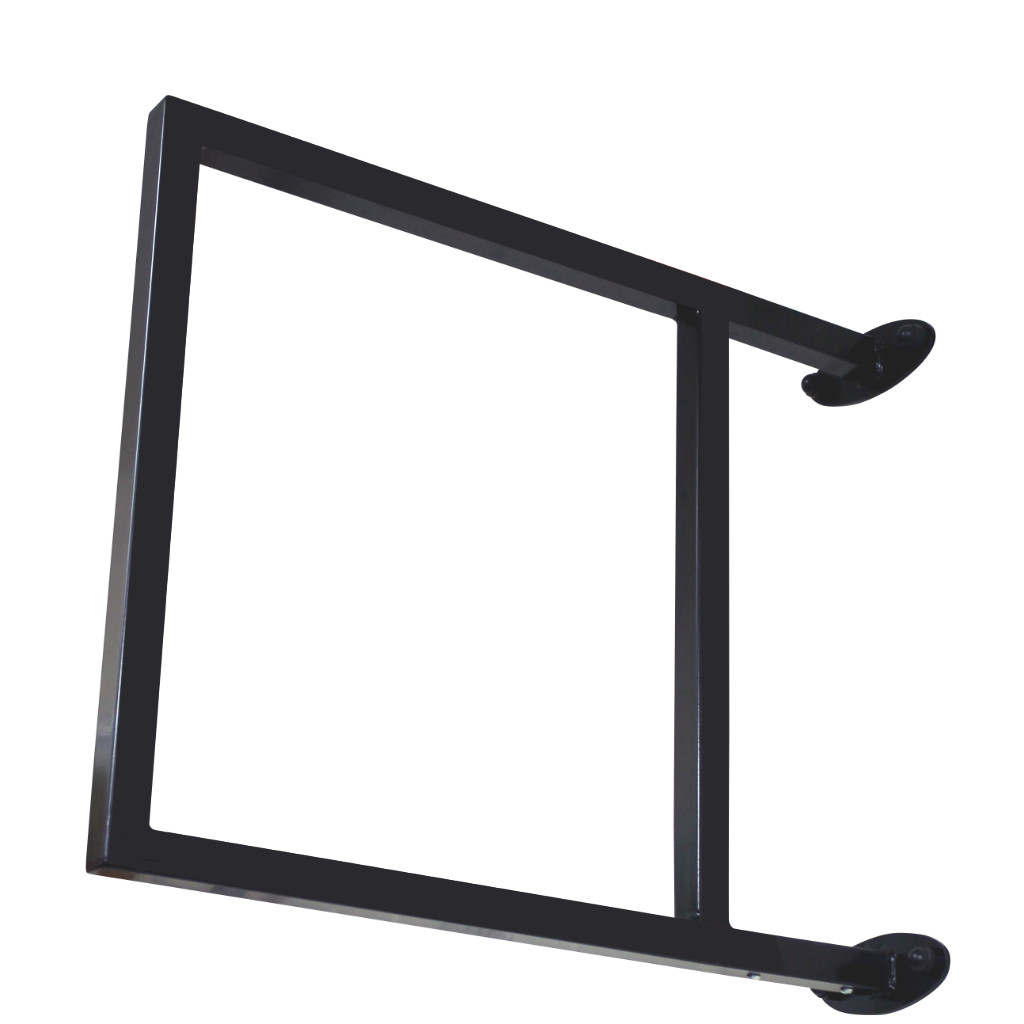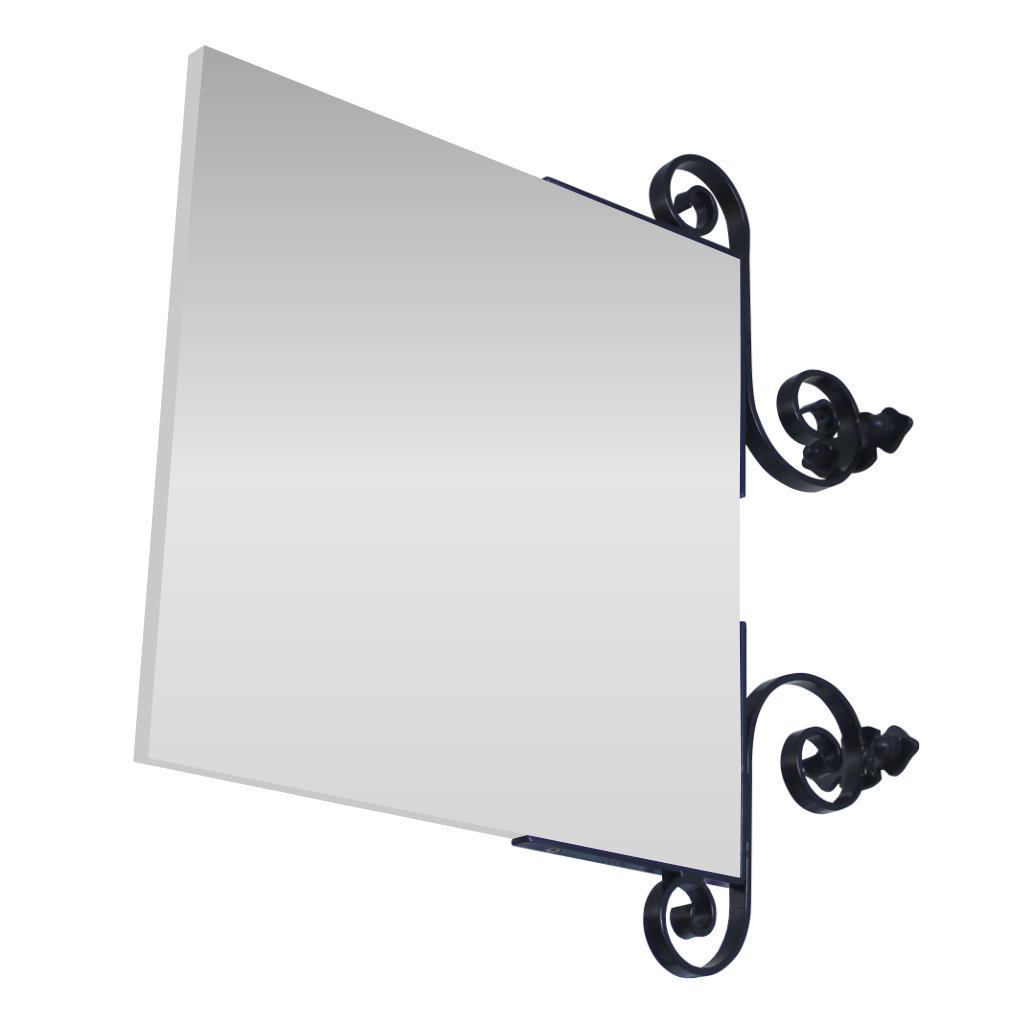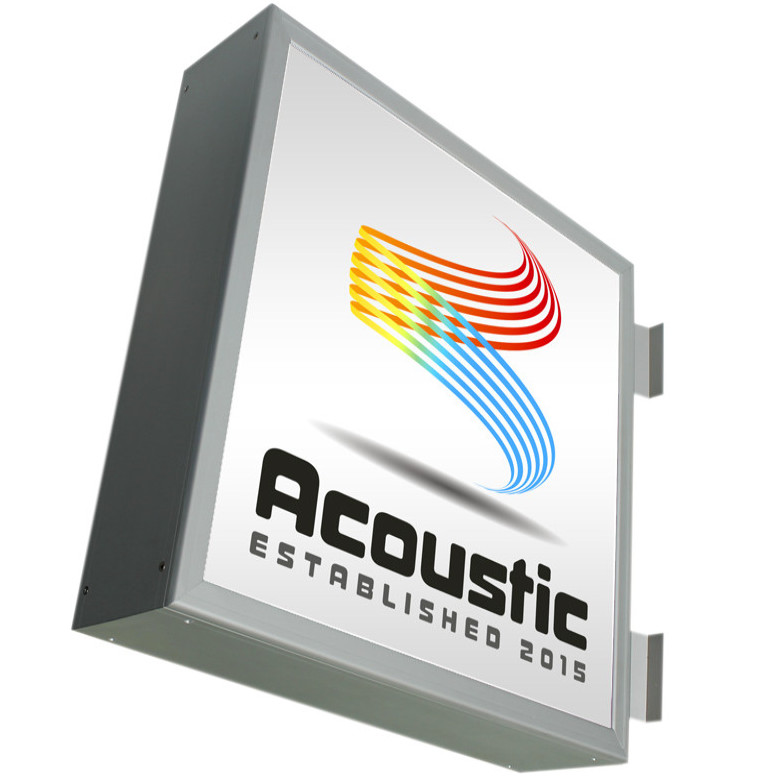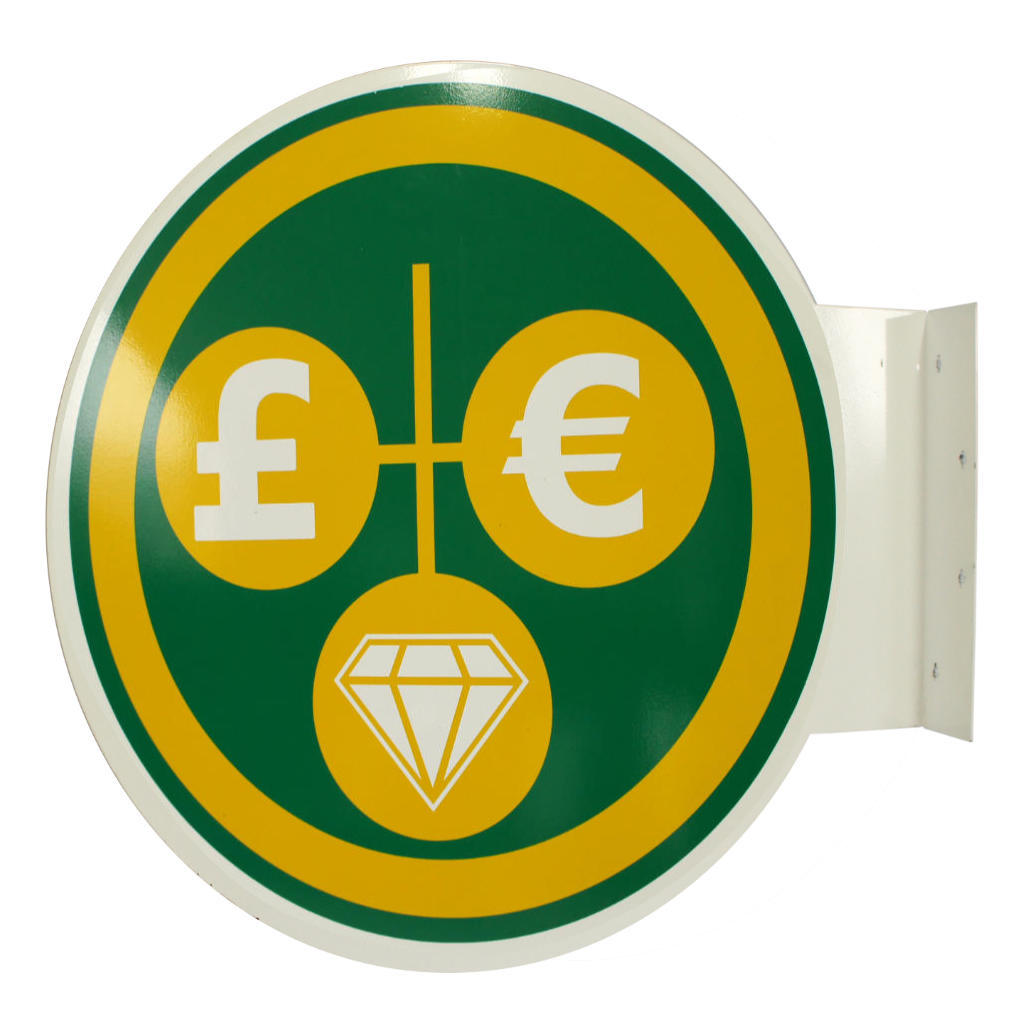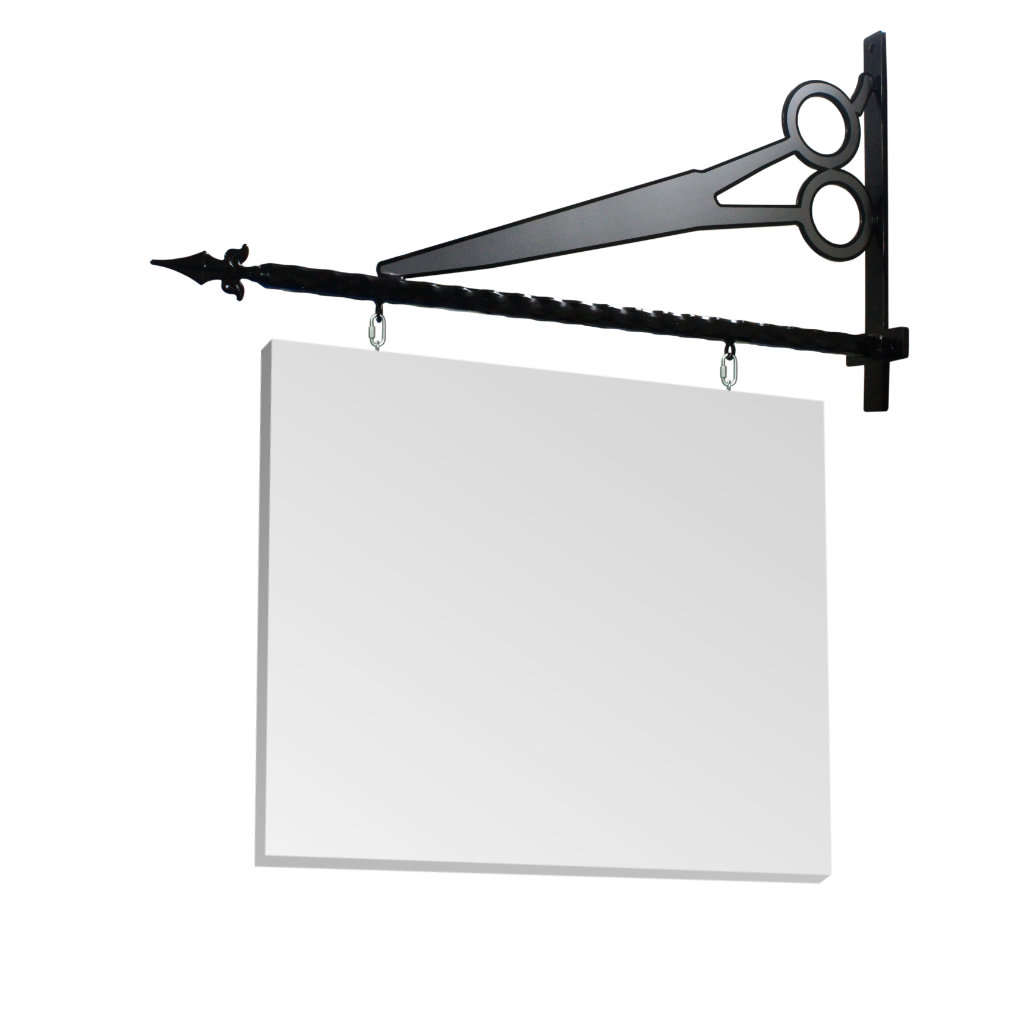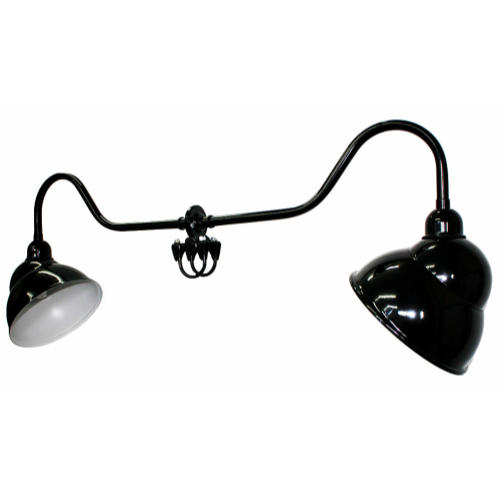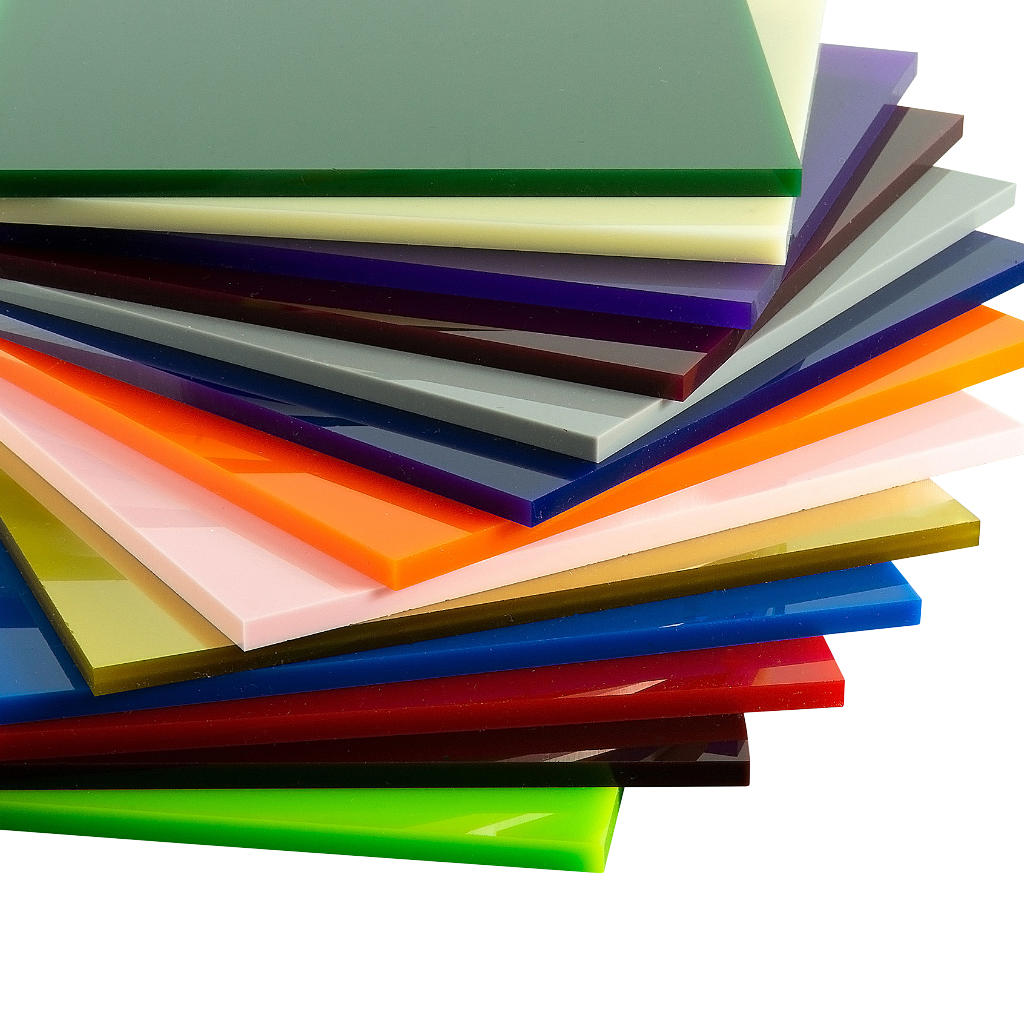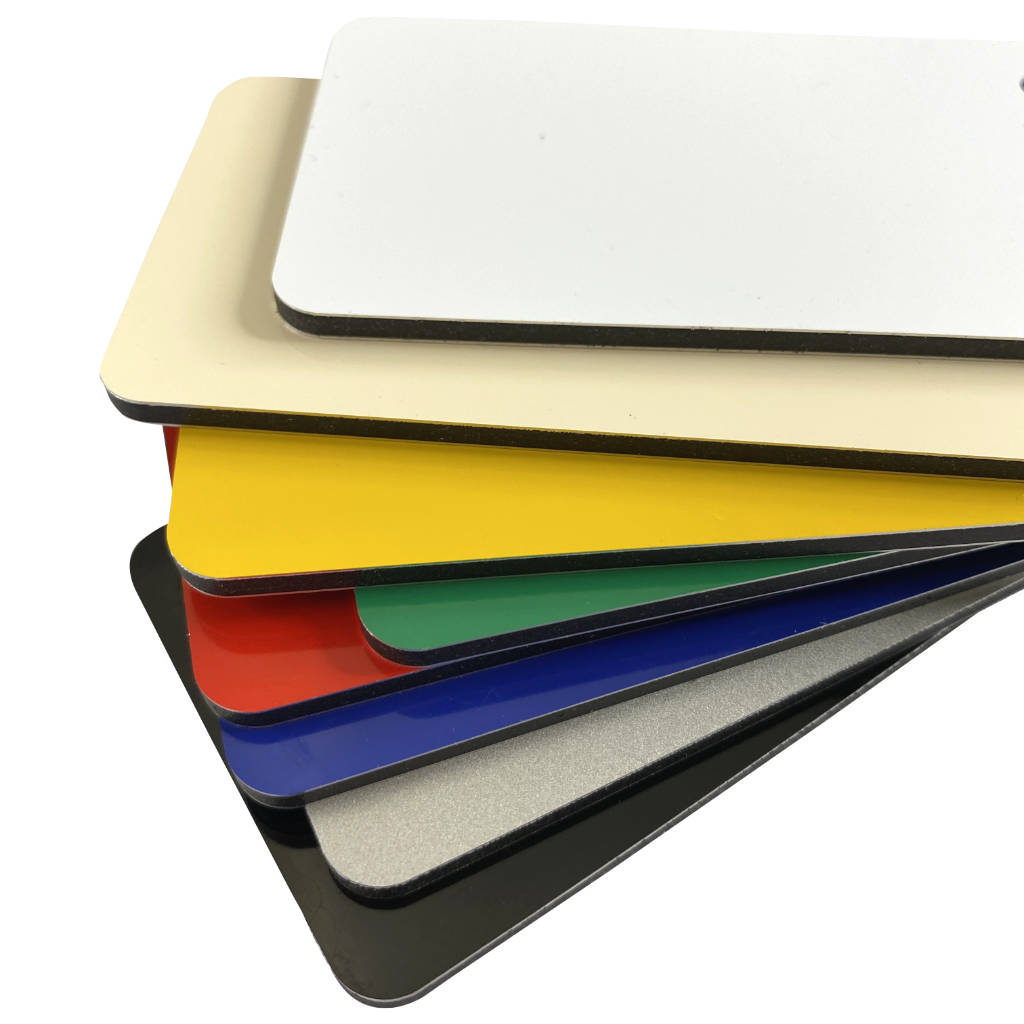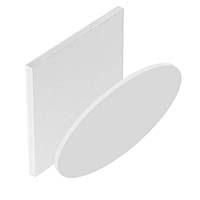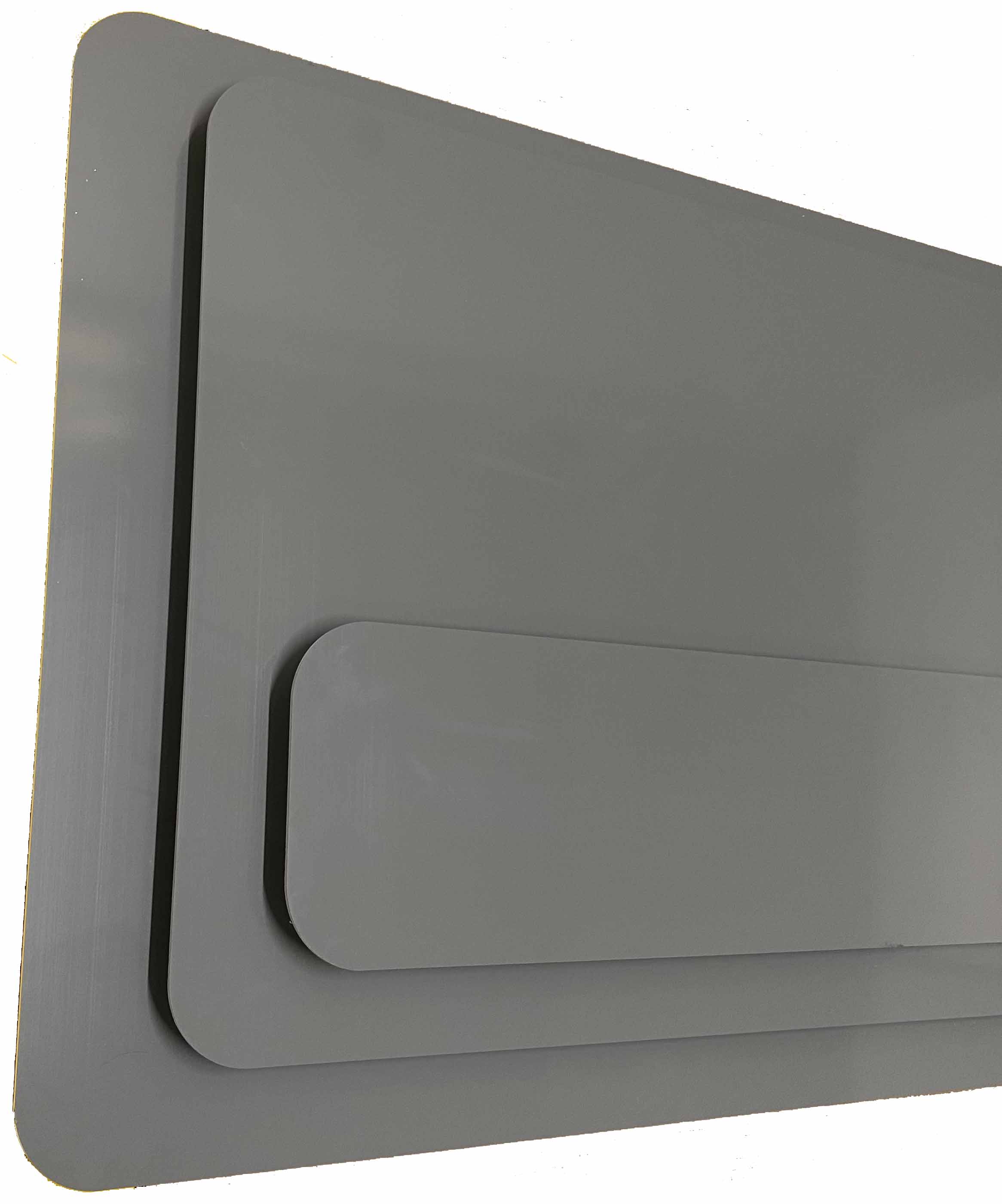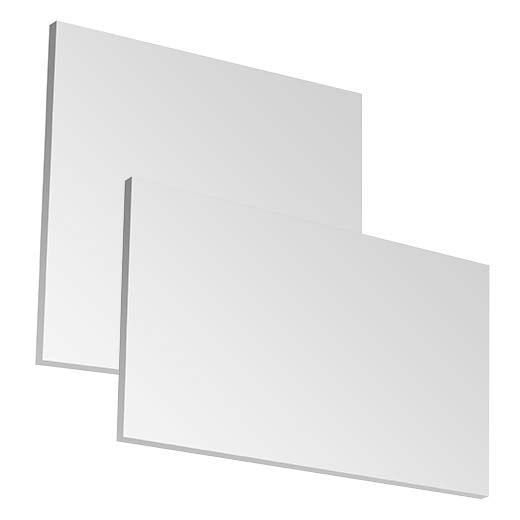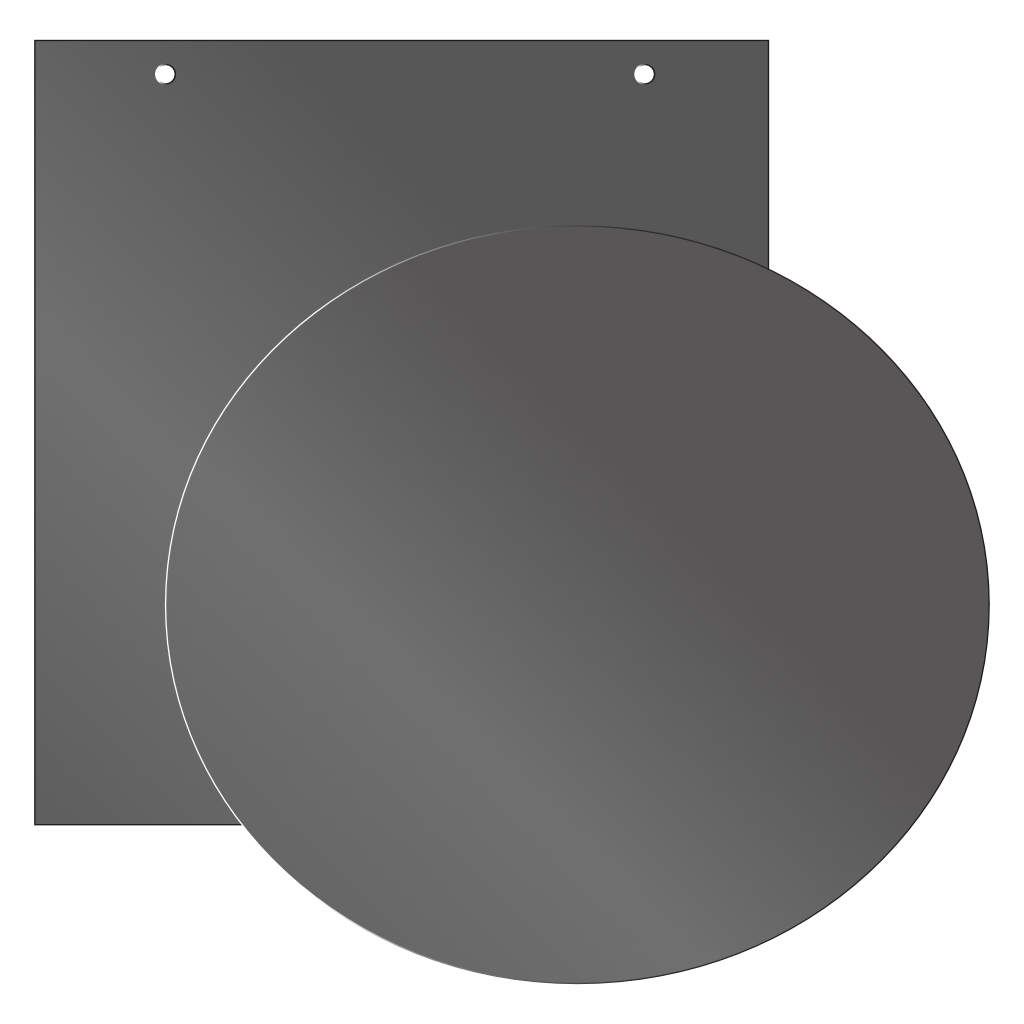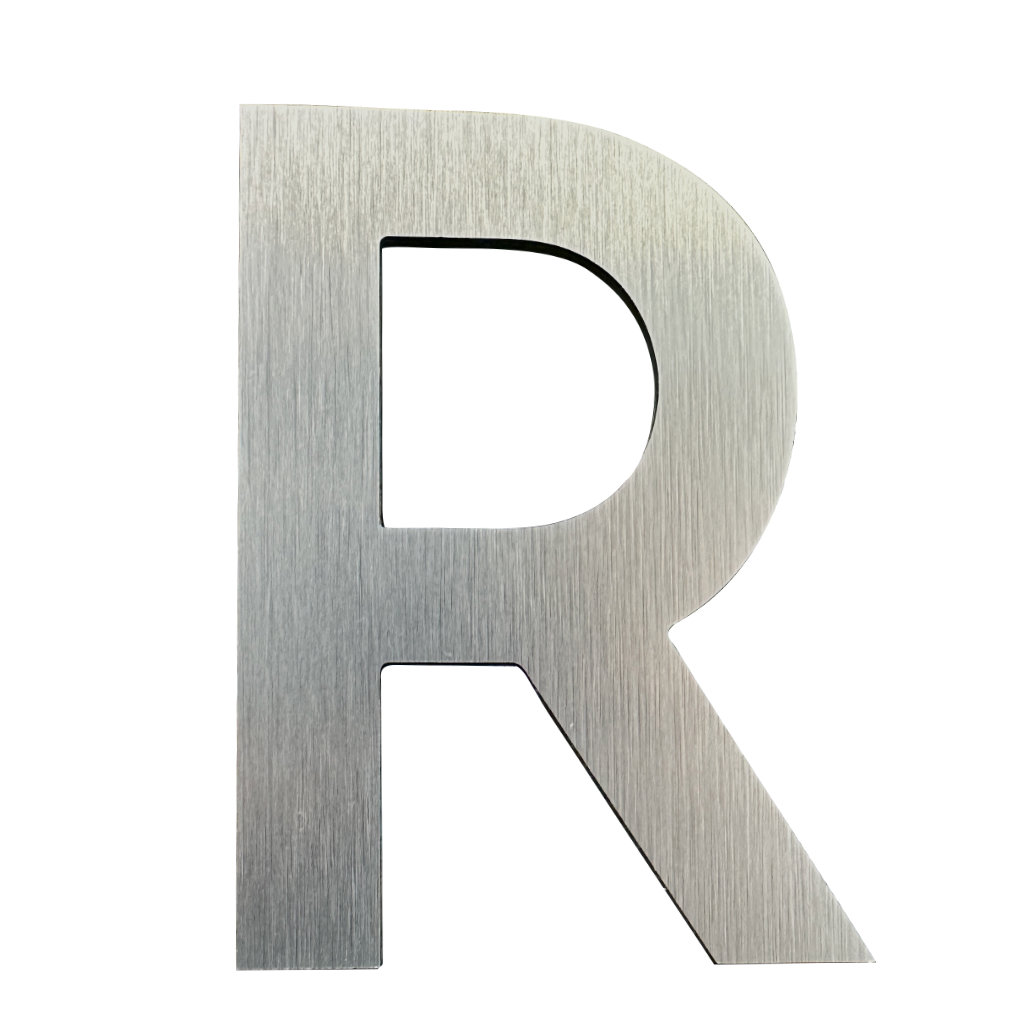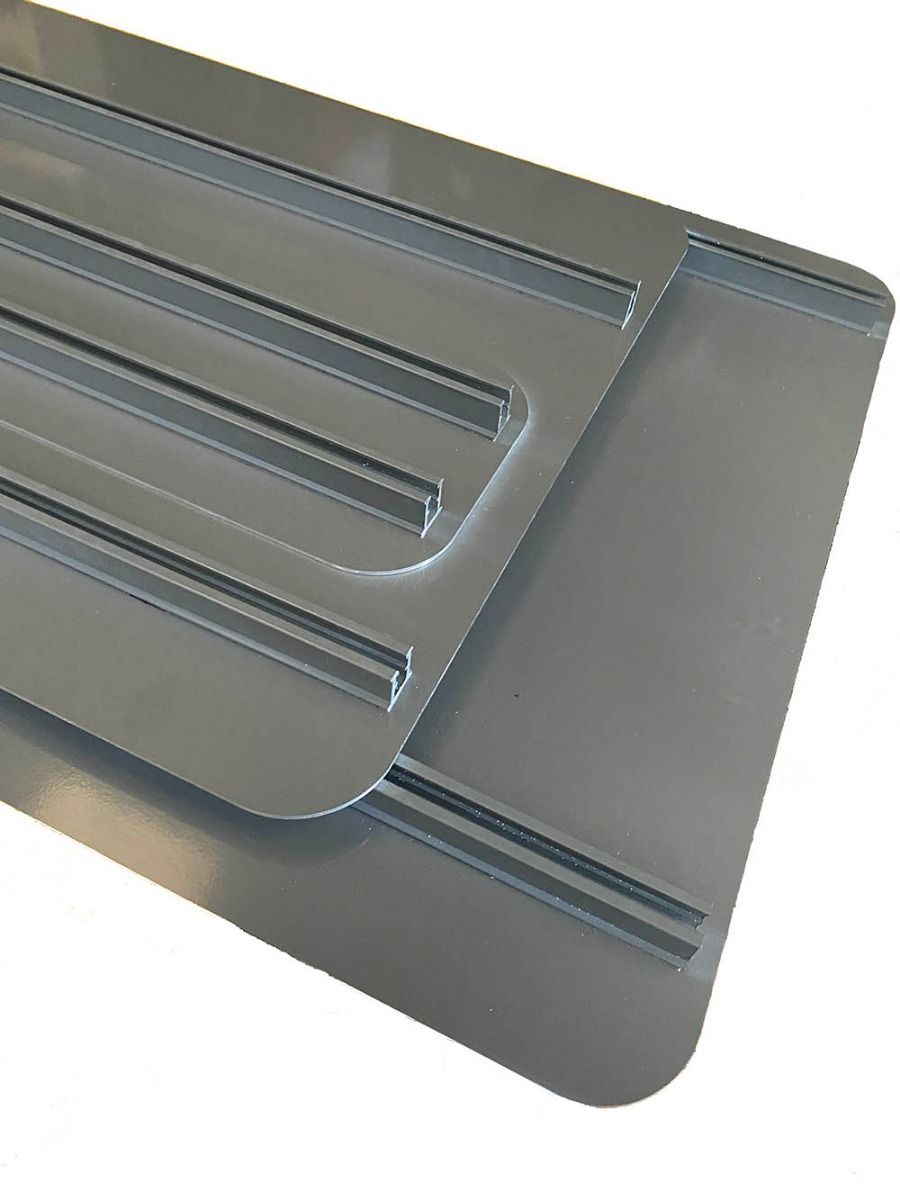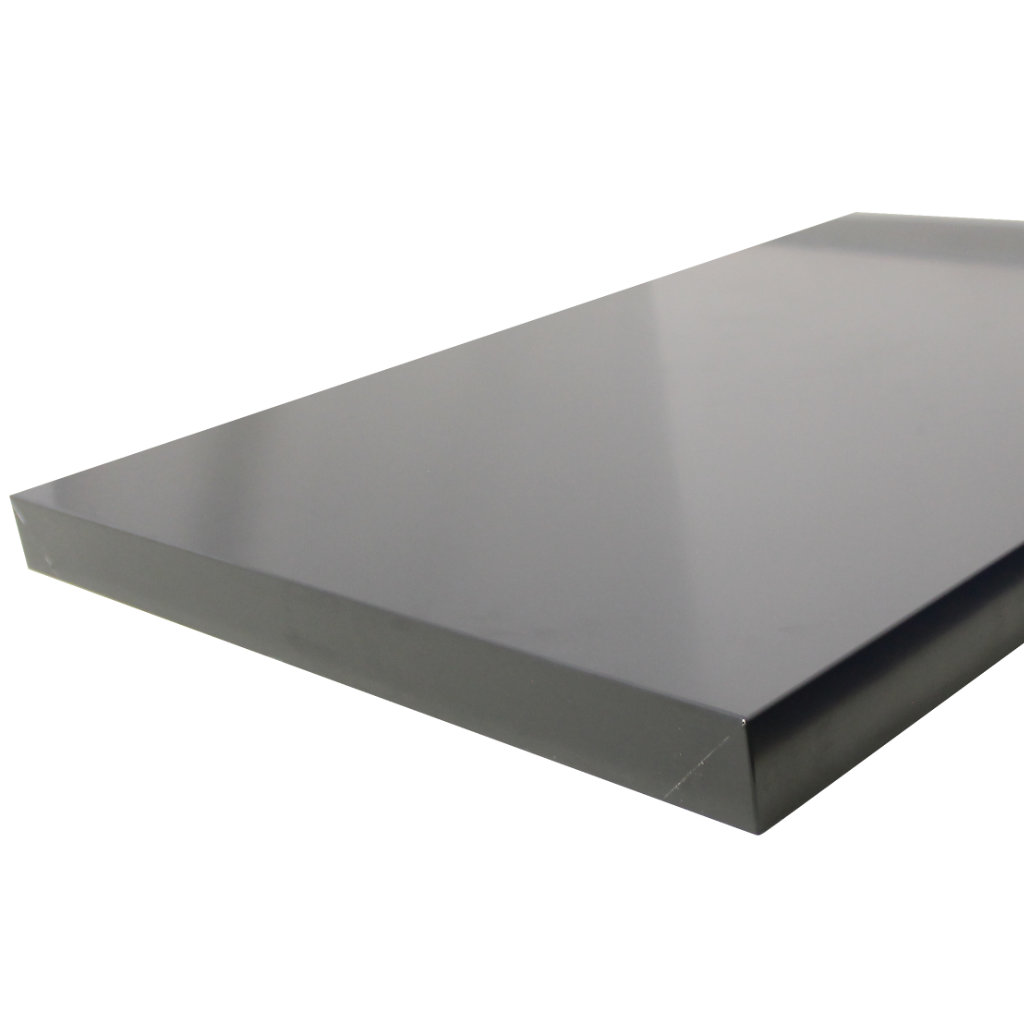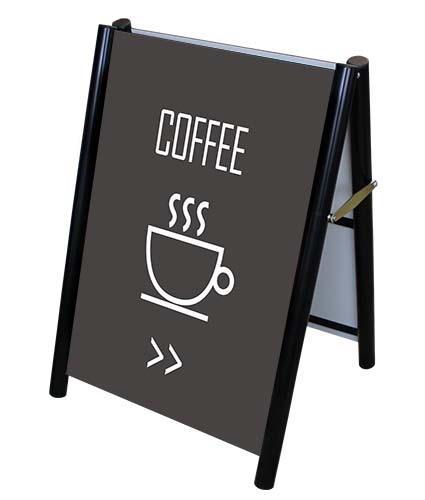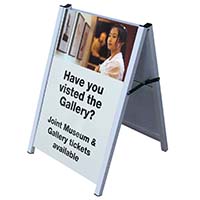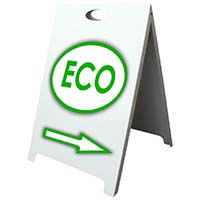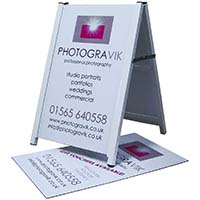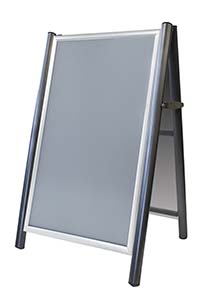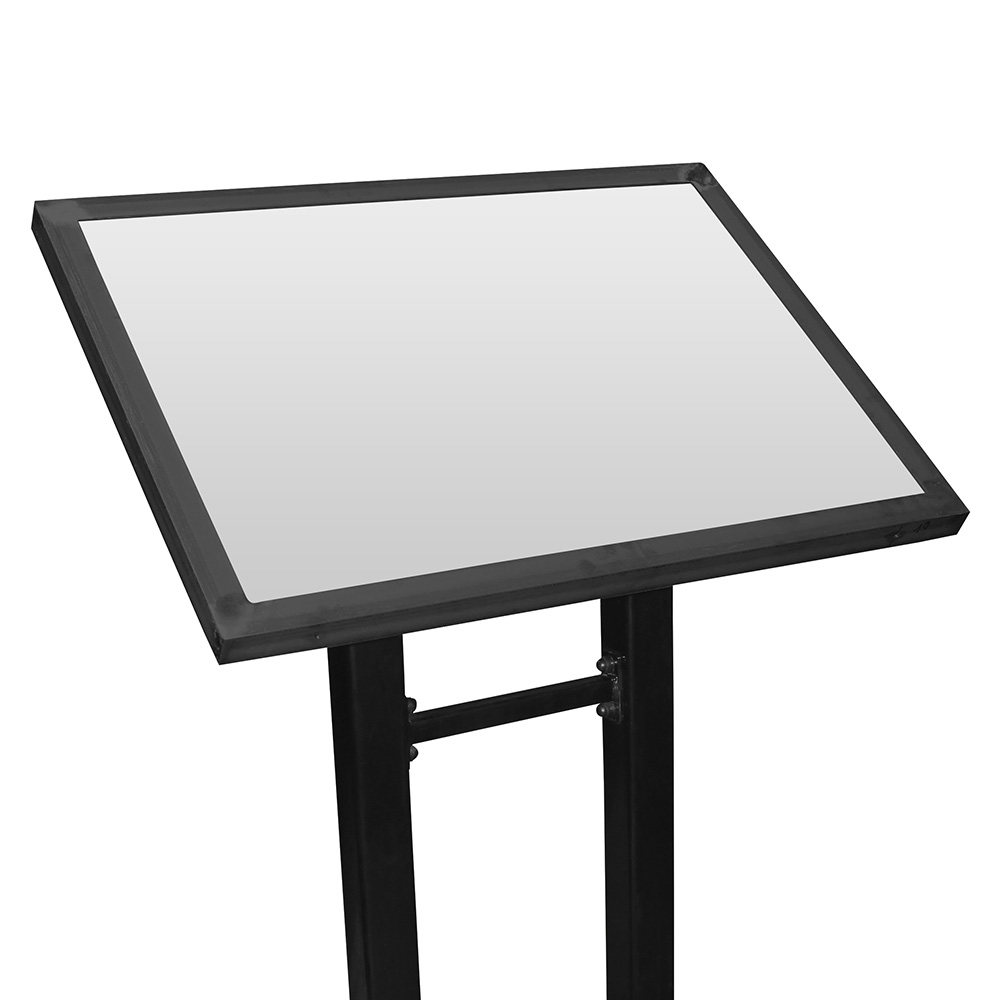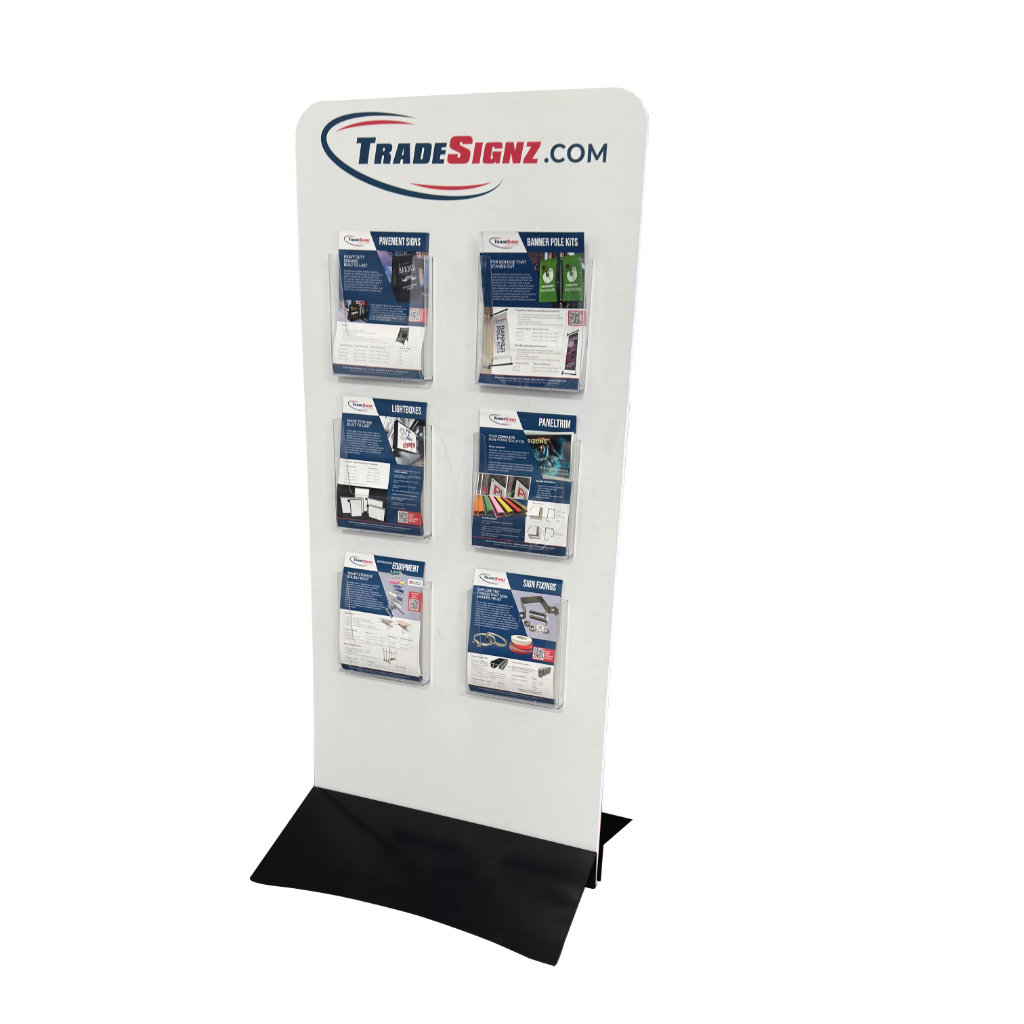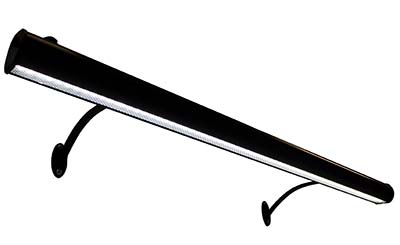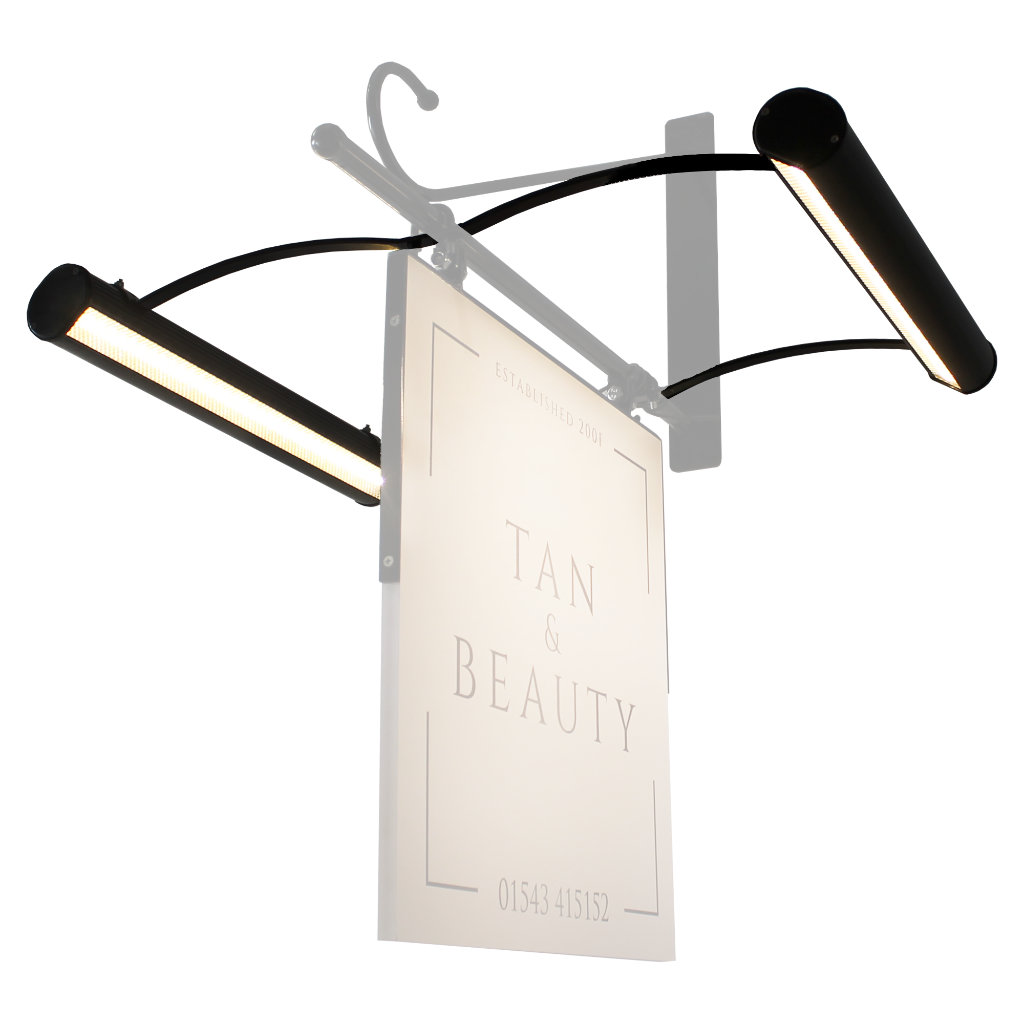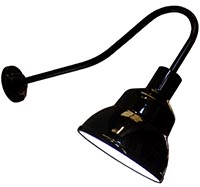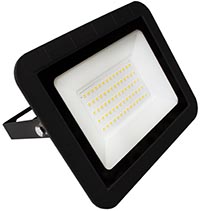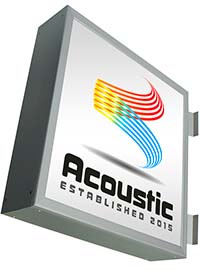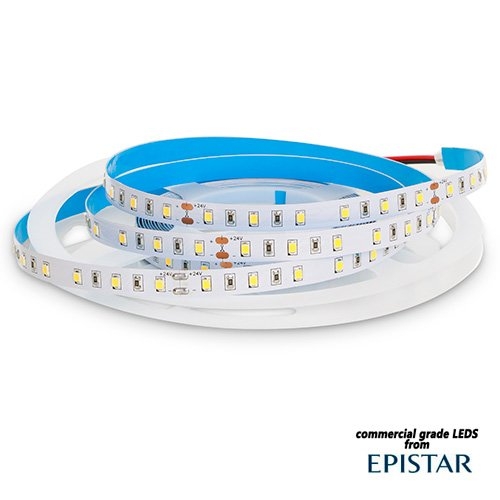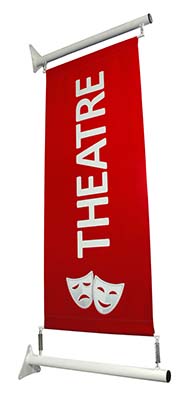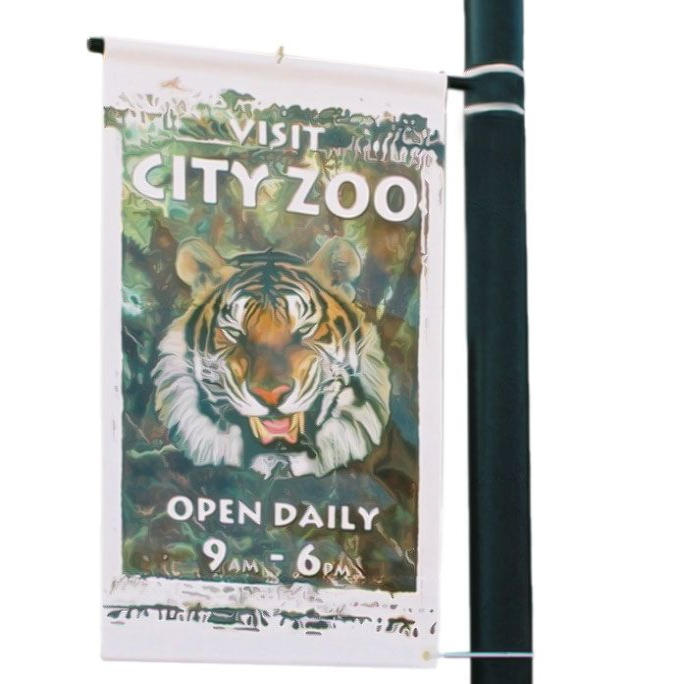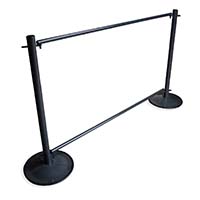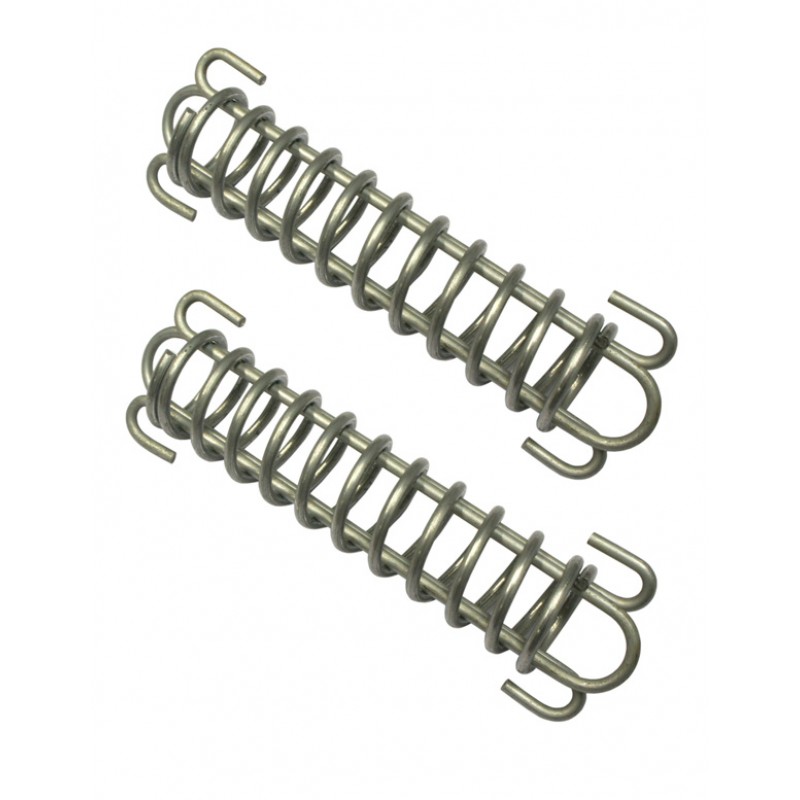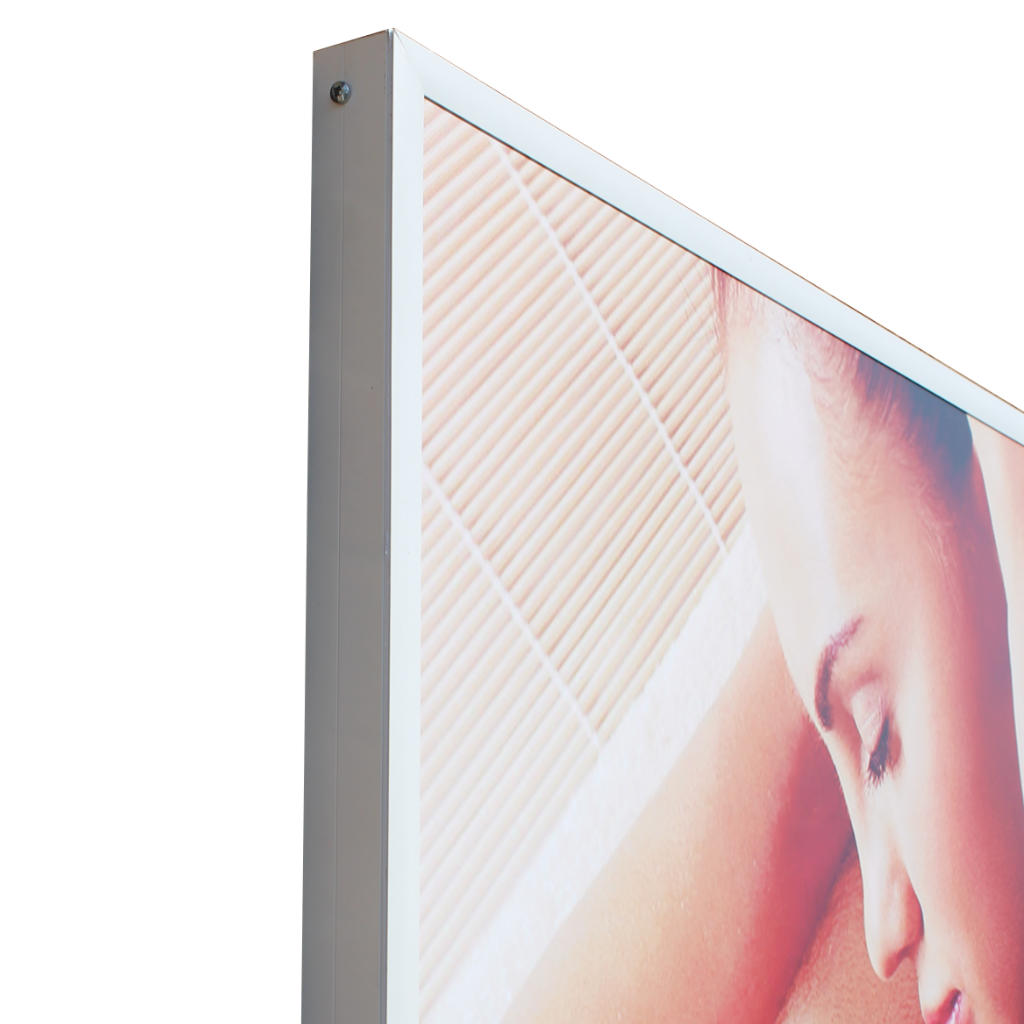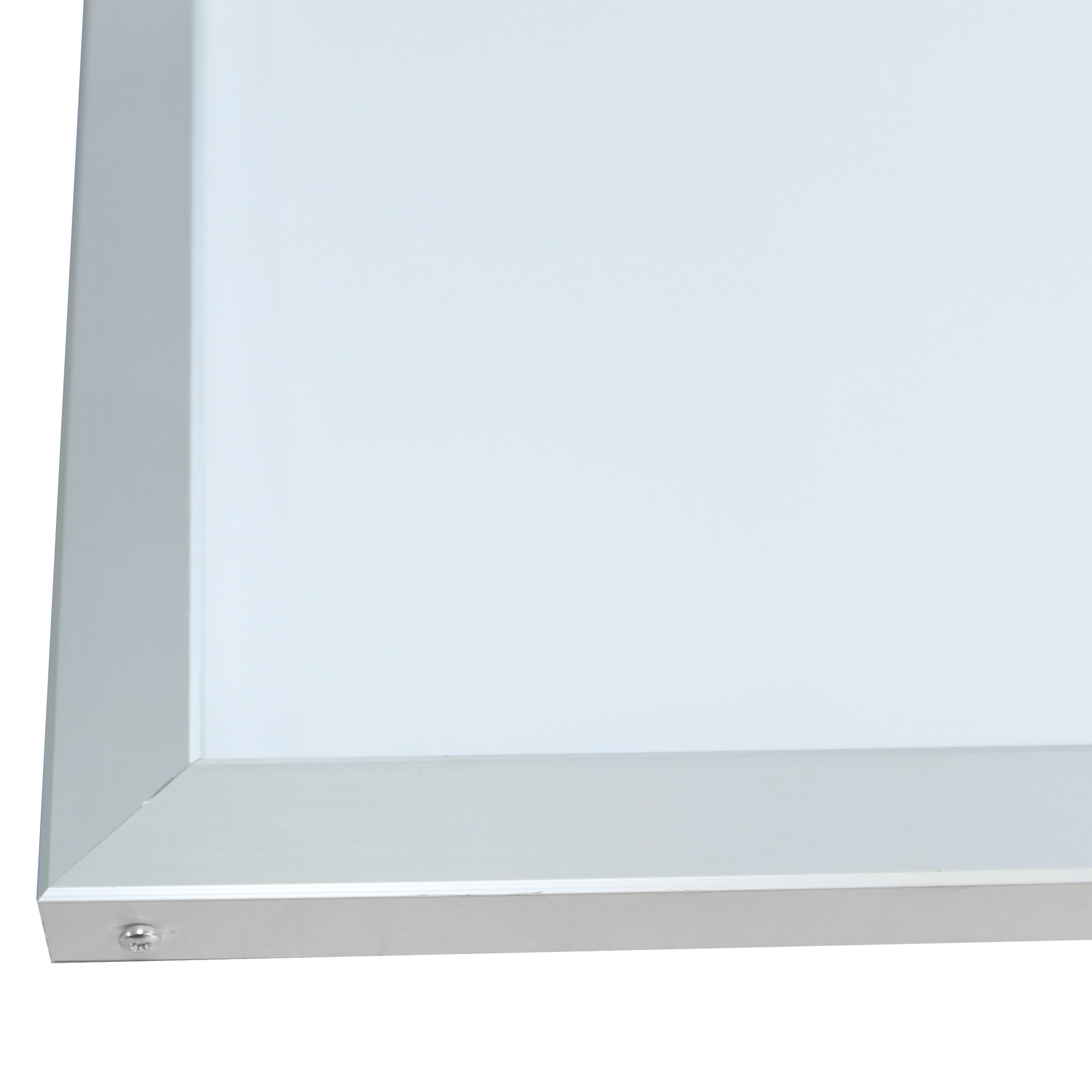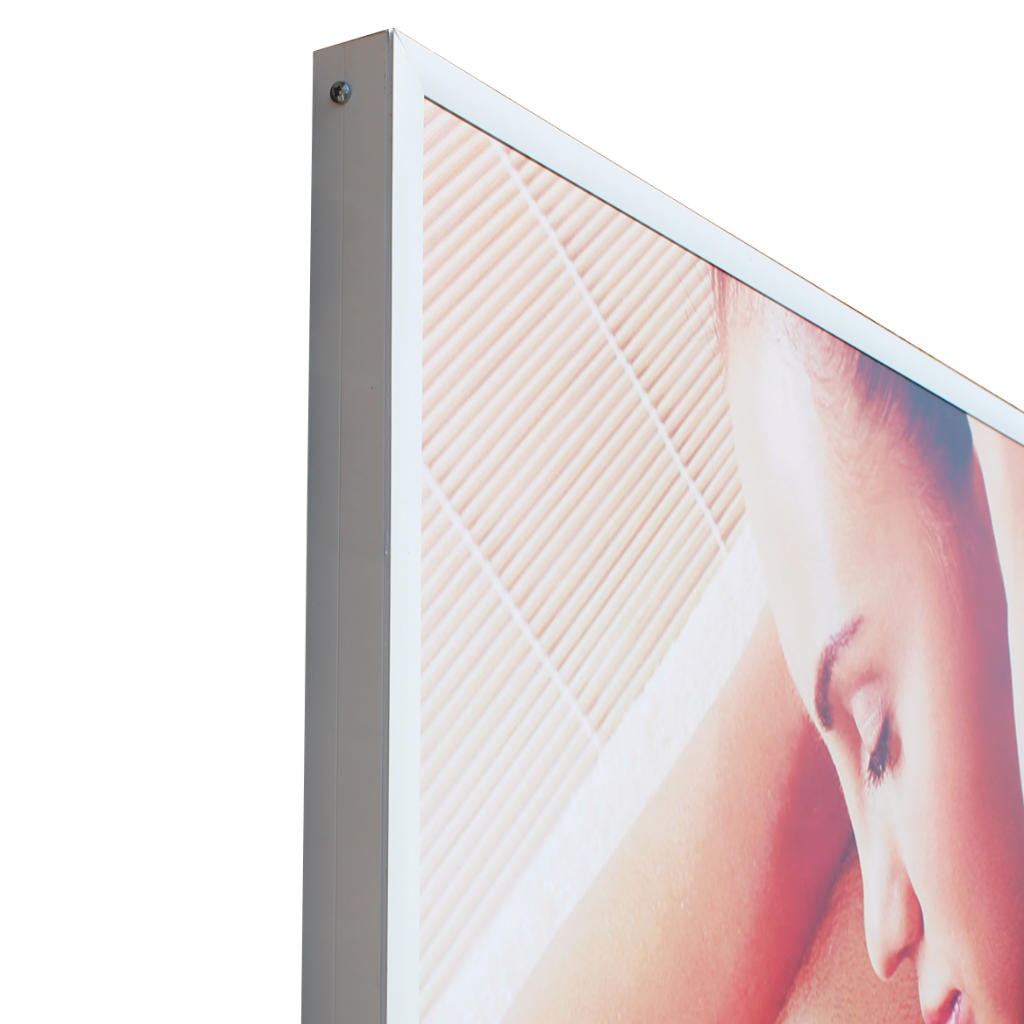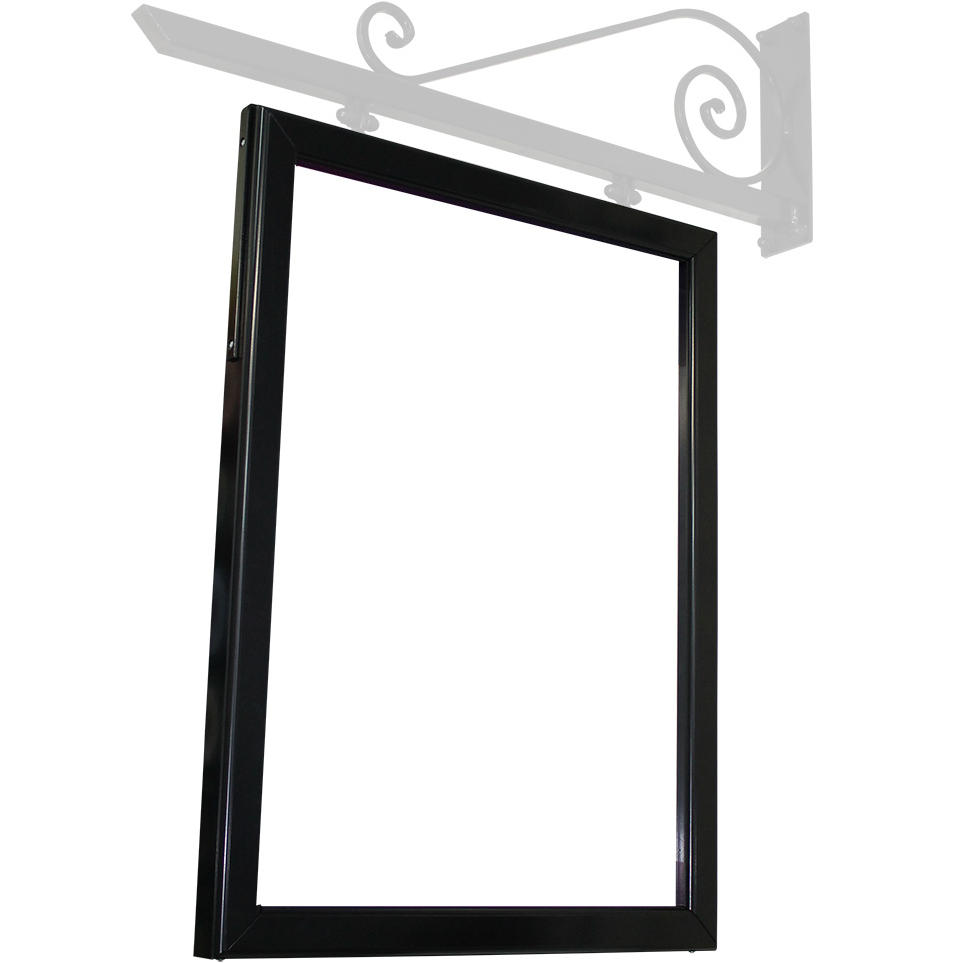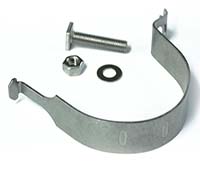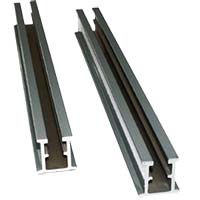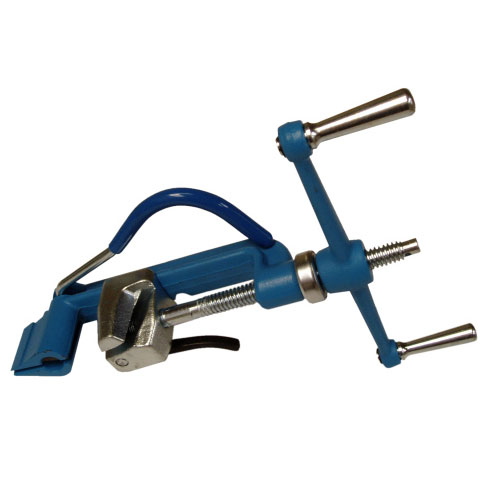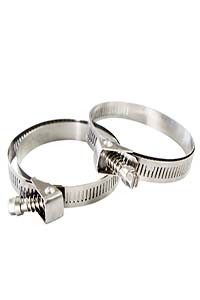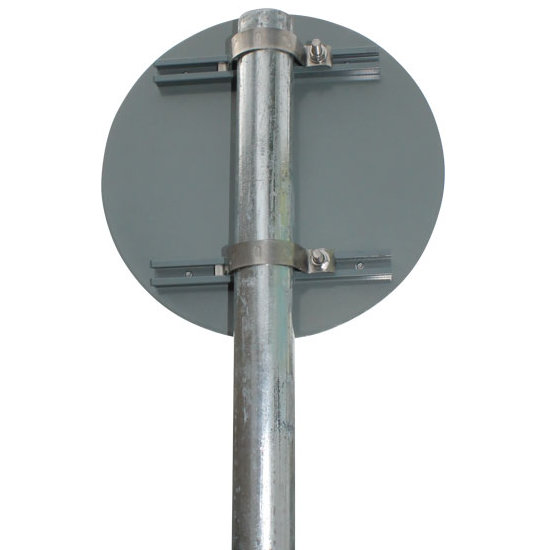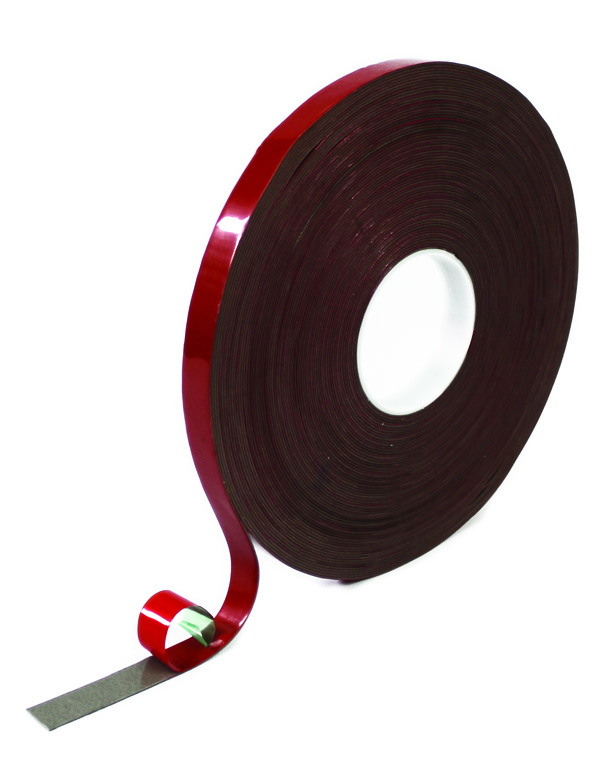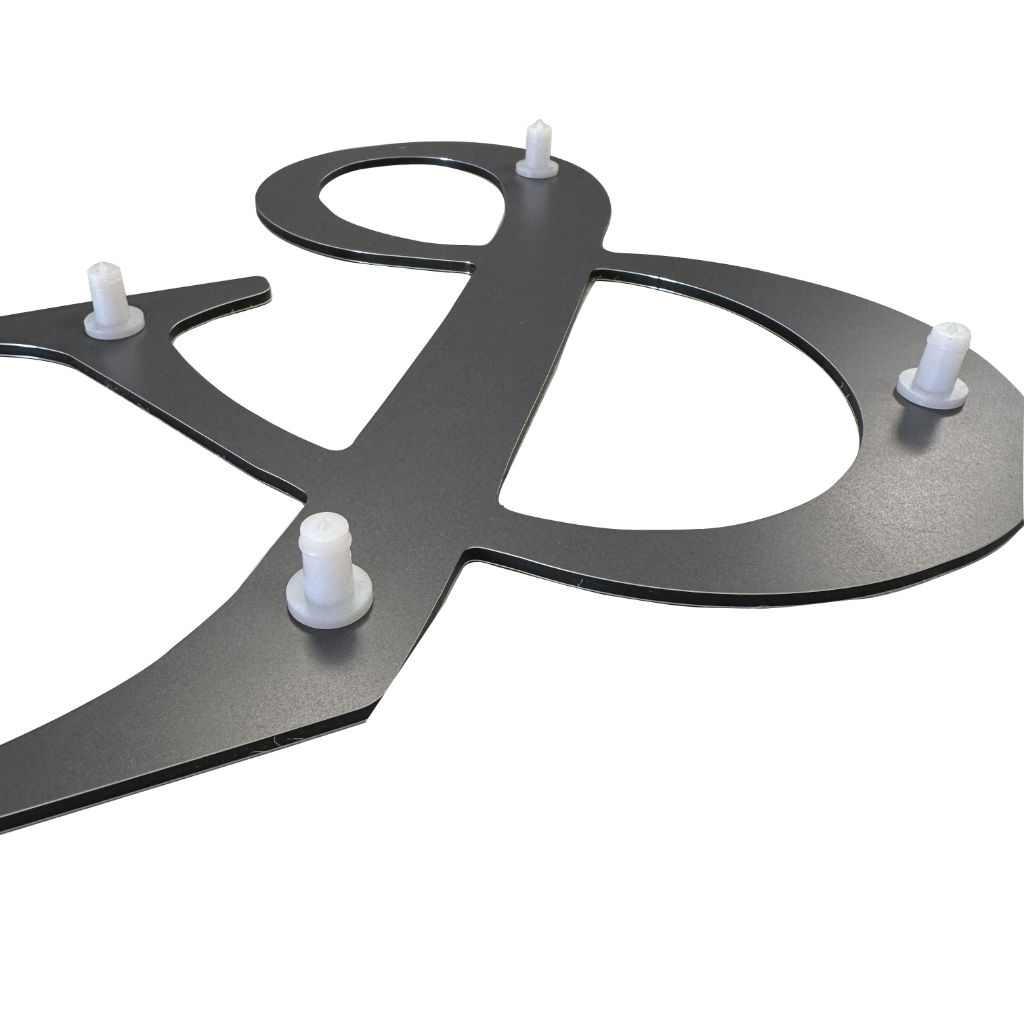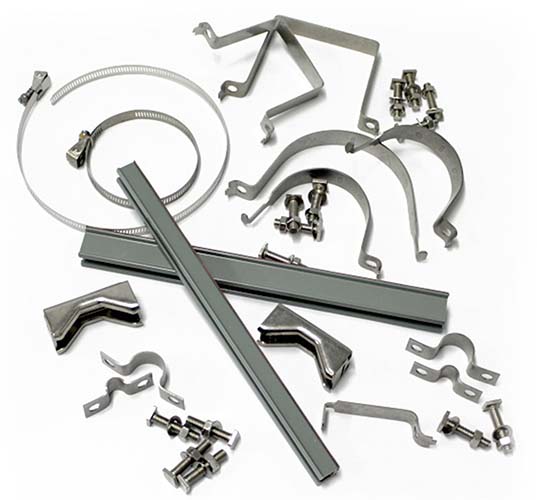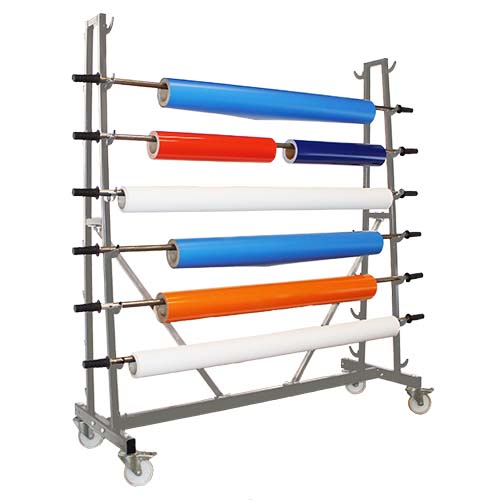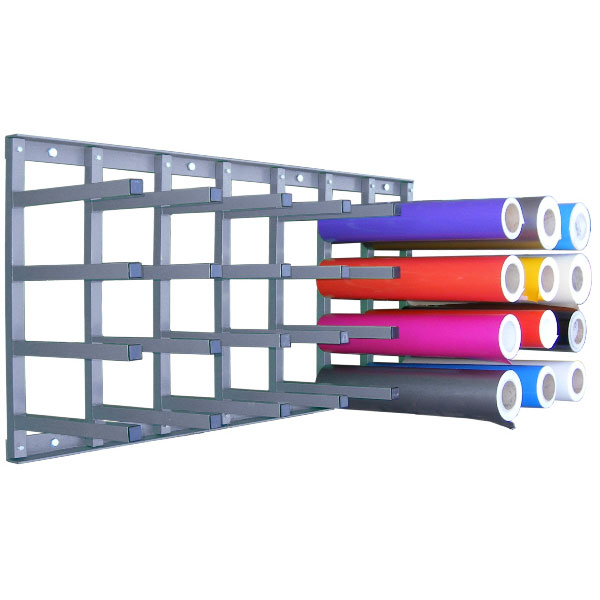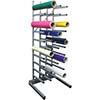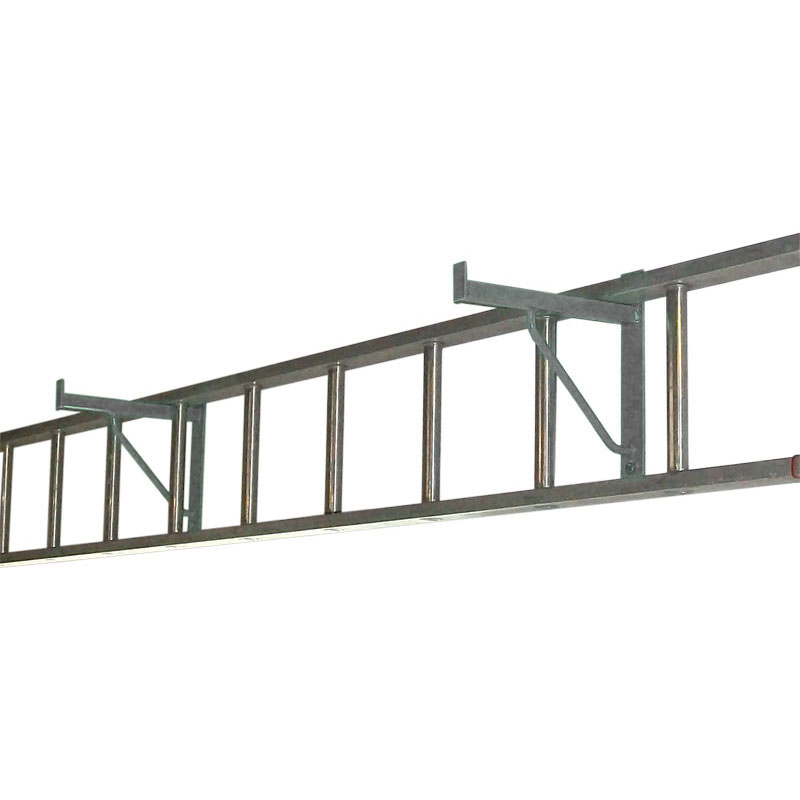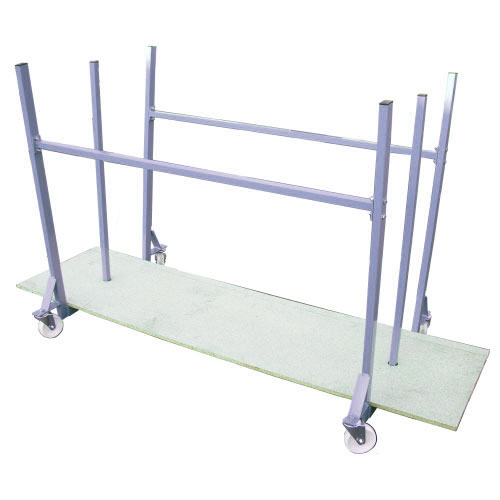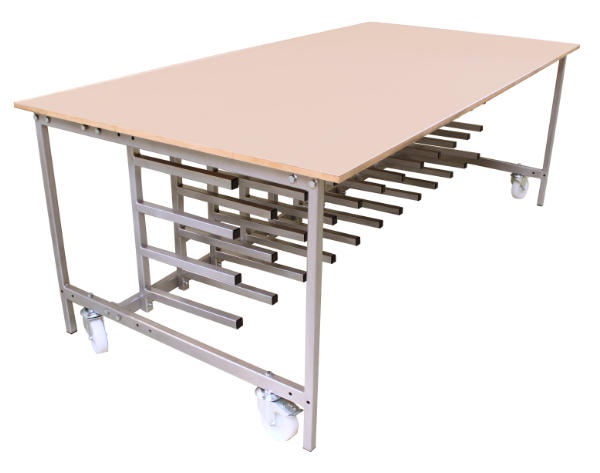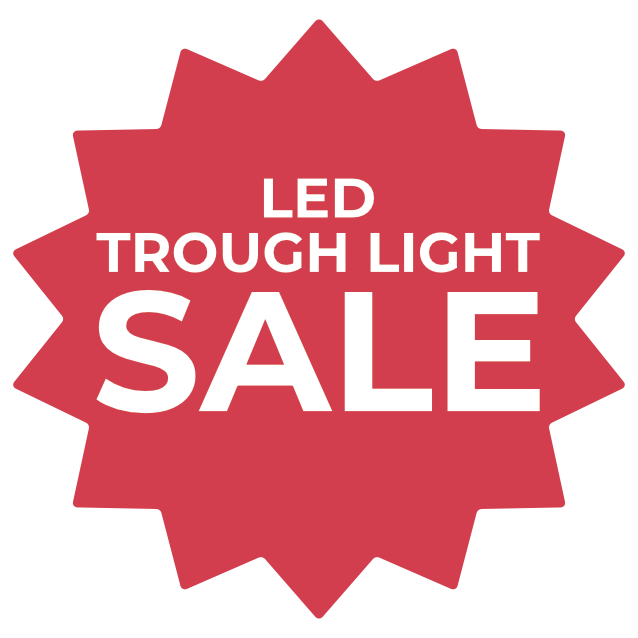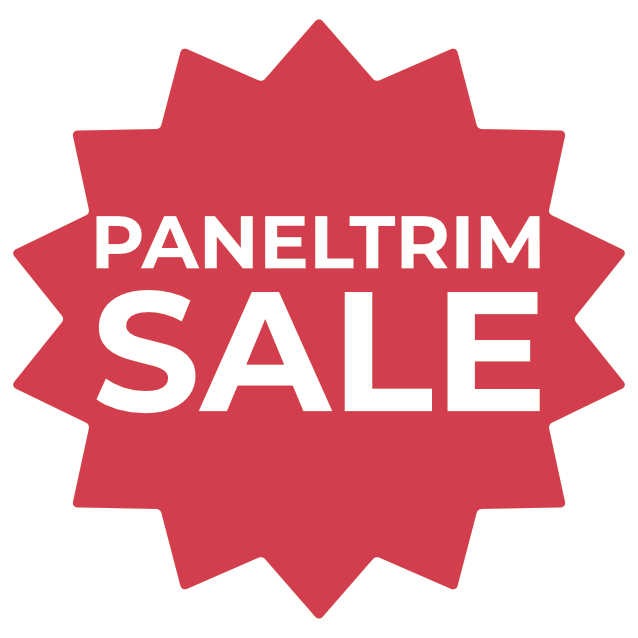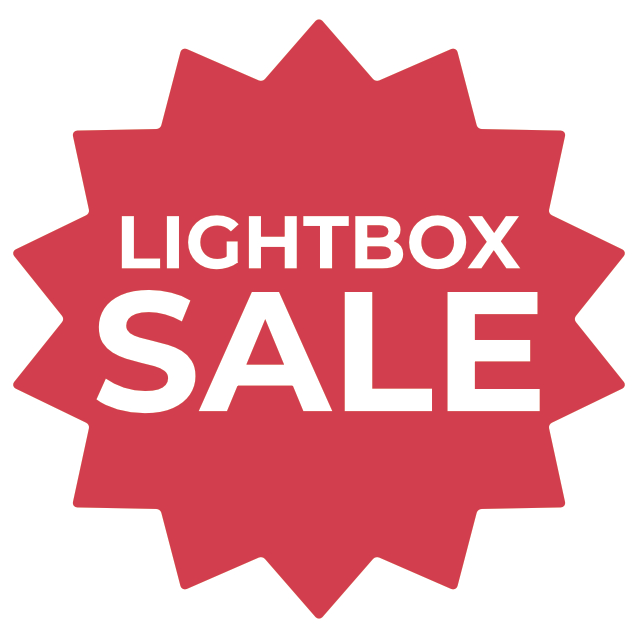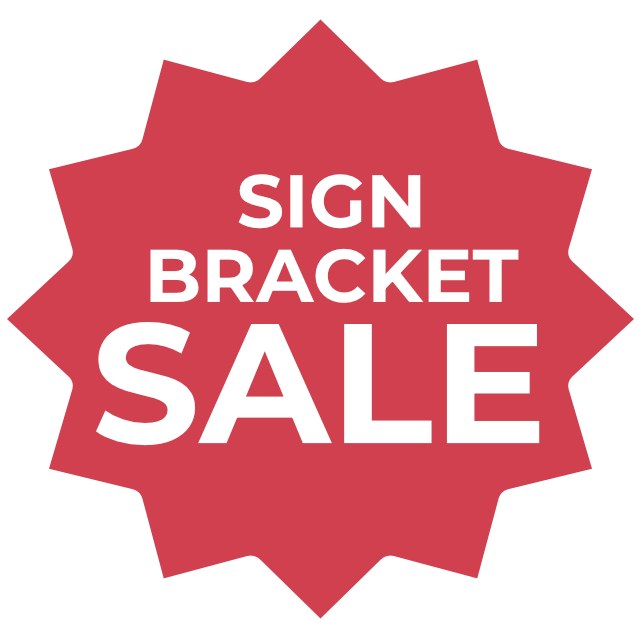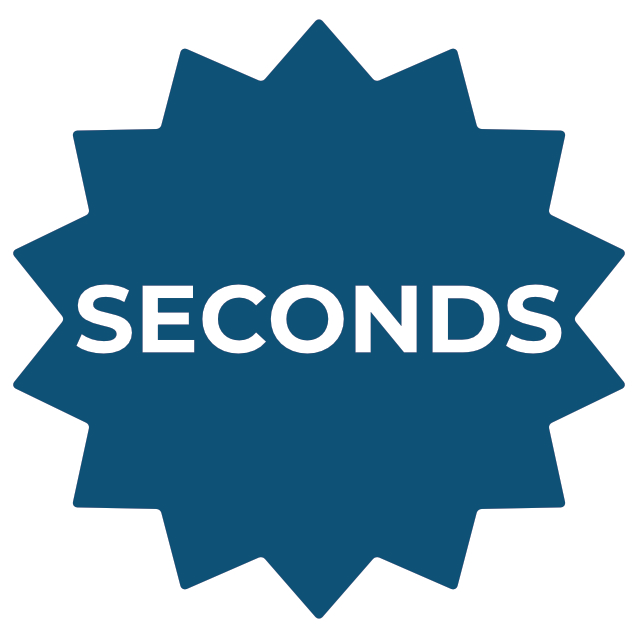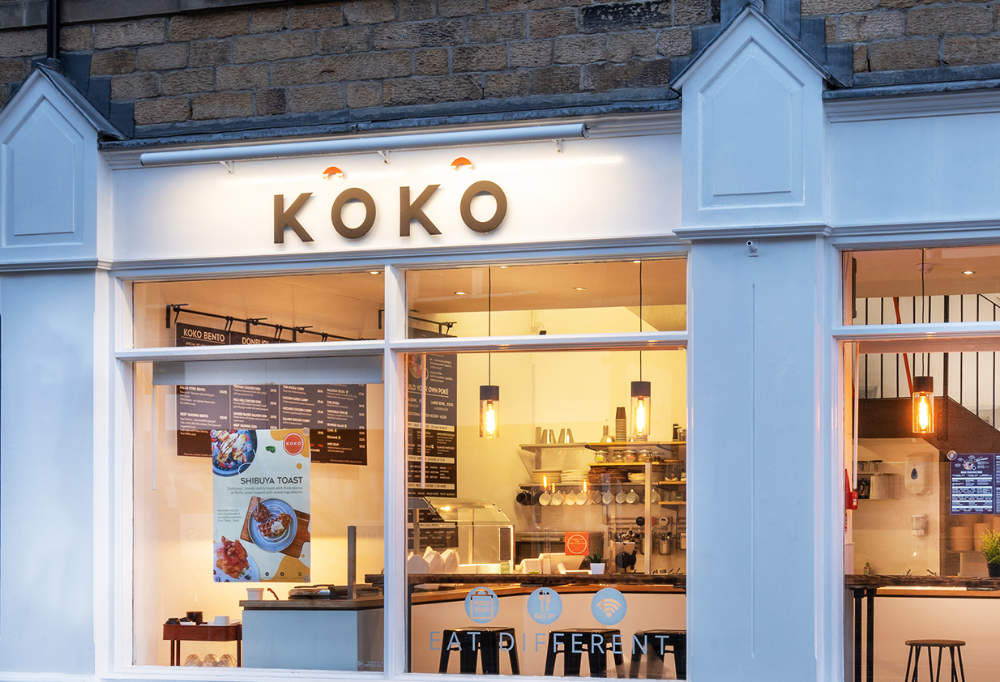
Sign Lighting Options
As a business owner, you have a variety of options when it comes to sign lighting, each having different benefits and applications. Here are six common types of sign lighting and their ideal applications:
1. Flood Lighting
2. Spot Lighting
3. Trough Lighting
4. Internal Sign Lighting
5. Decorative Lighting
6. Illuminated Letters & Logos
1. Flood Lights
Sign LED flood lights are powerful, wide angle lights that flood a large area with light.
Historically they were large units with delicate control gear and very heavy electricity requirements to power a number of different incandescent bulb types, which themselves had a relatively short life.
That’s all changed and from here on in we will only discuss LED lighting.
LED flood sign lights are available in a wide range of sizes, from small 10 watt units up to 250 watt and bigger. This type of lighting is often used when you want to showcase a brand or logo prominently, ensuring it's visible from a distance and stands out during both day and night. You may have a very deep fascia sign and you want to light up both the sign, your shop front and the forecourt, in which case flood lights are ideal.
Commercial floodlights generally only come with a basic mounting bracket which isn’t conducive for fascia lighting, but there are specialist manufacturers of brackets that will suit every need. We have brackets designed to mount the lights a distance from the wall so that they face backwards and evenly illuminate the fascia. We also have other brackets that fix to existing projecting signs to light both sides of the sign.
Ideal Applications:
Brand Visibility: Flood lighting is perfect for highlighting your building frontage including a large sign & brand or logo on signs, making it easily recognizable to passersby.
Large Signs: Flood lights work well for larger area signs, billboards, or signs to be viewed from a distance. They won’t be the brightest option but will make a large area stand out in the dark – and at a comparatively low cost.
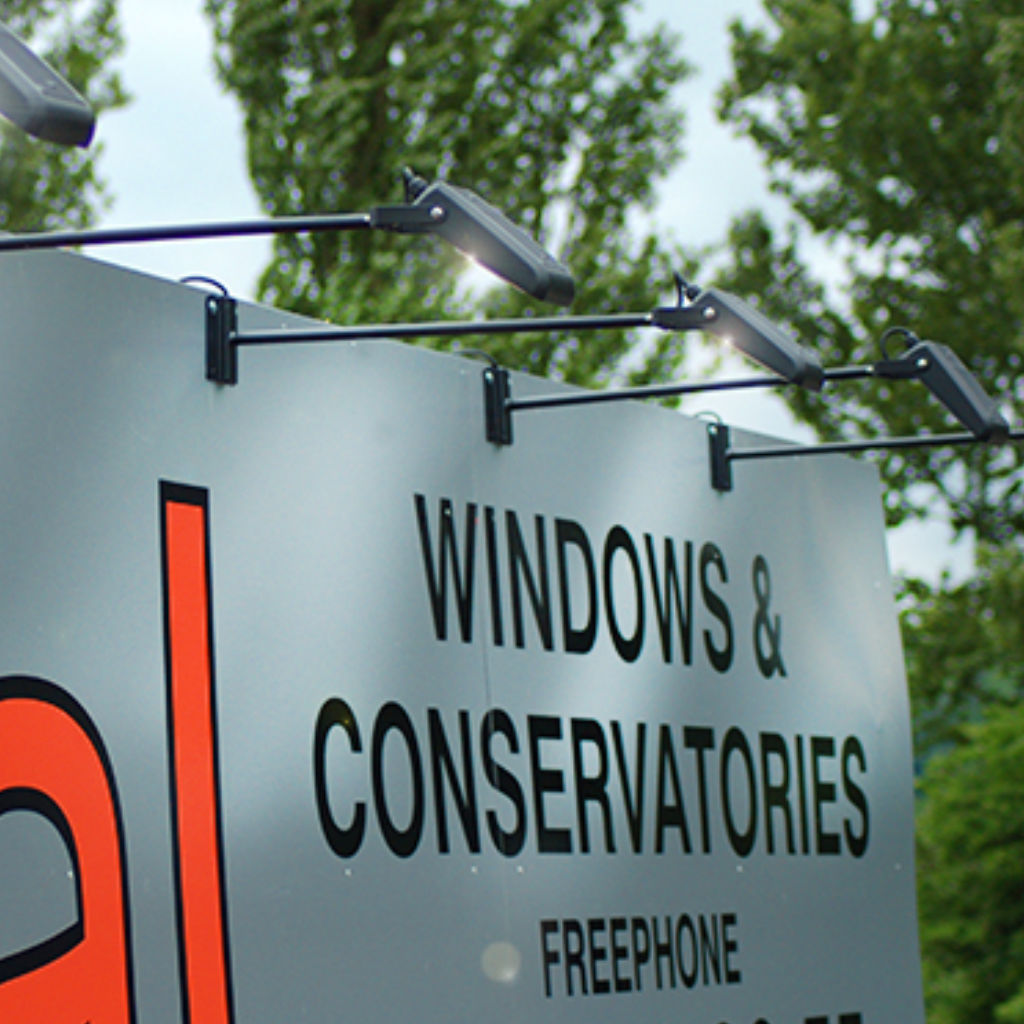
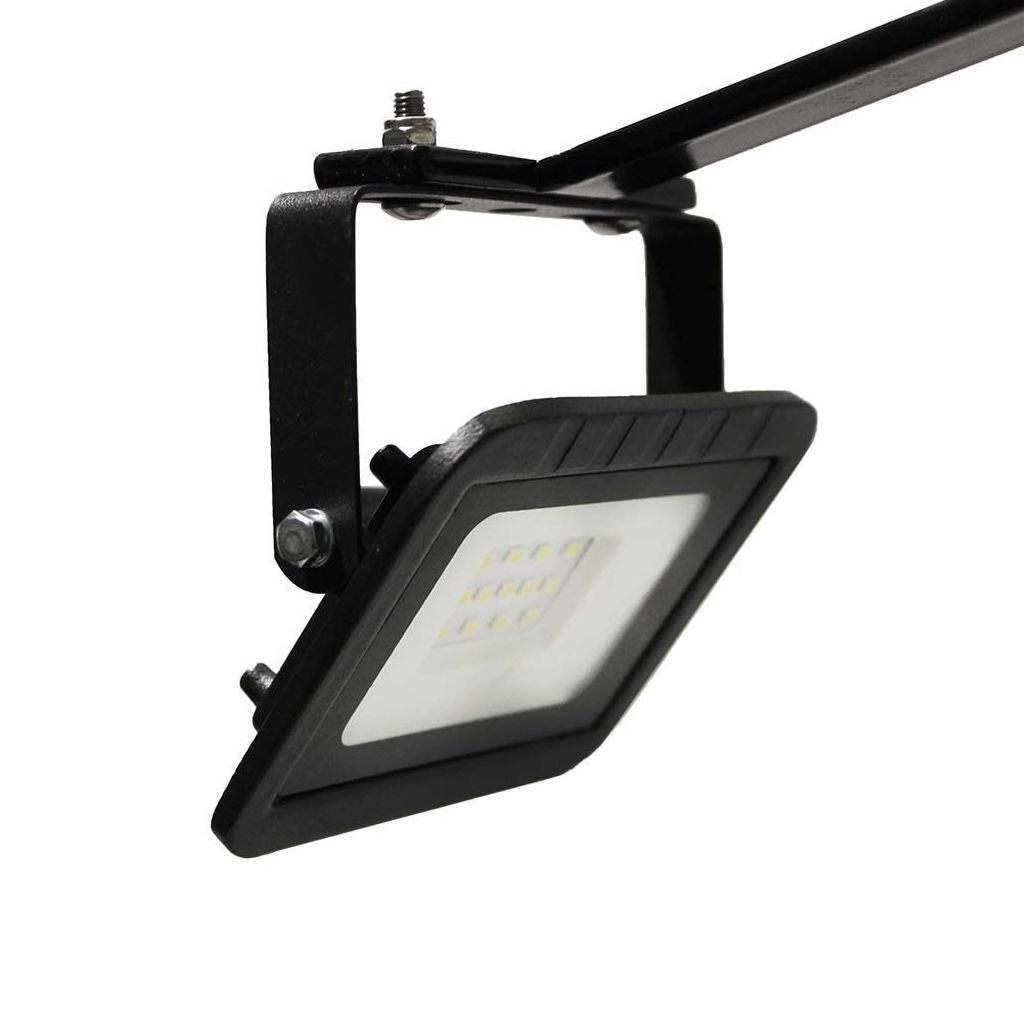
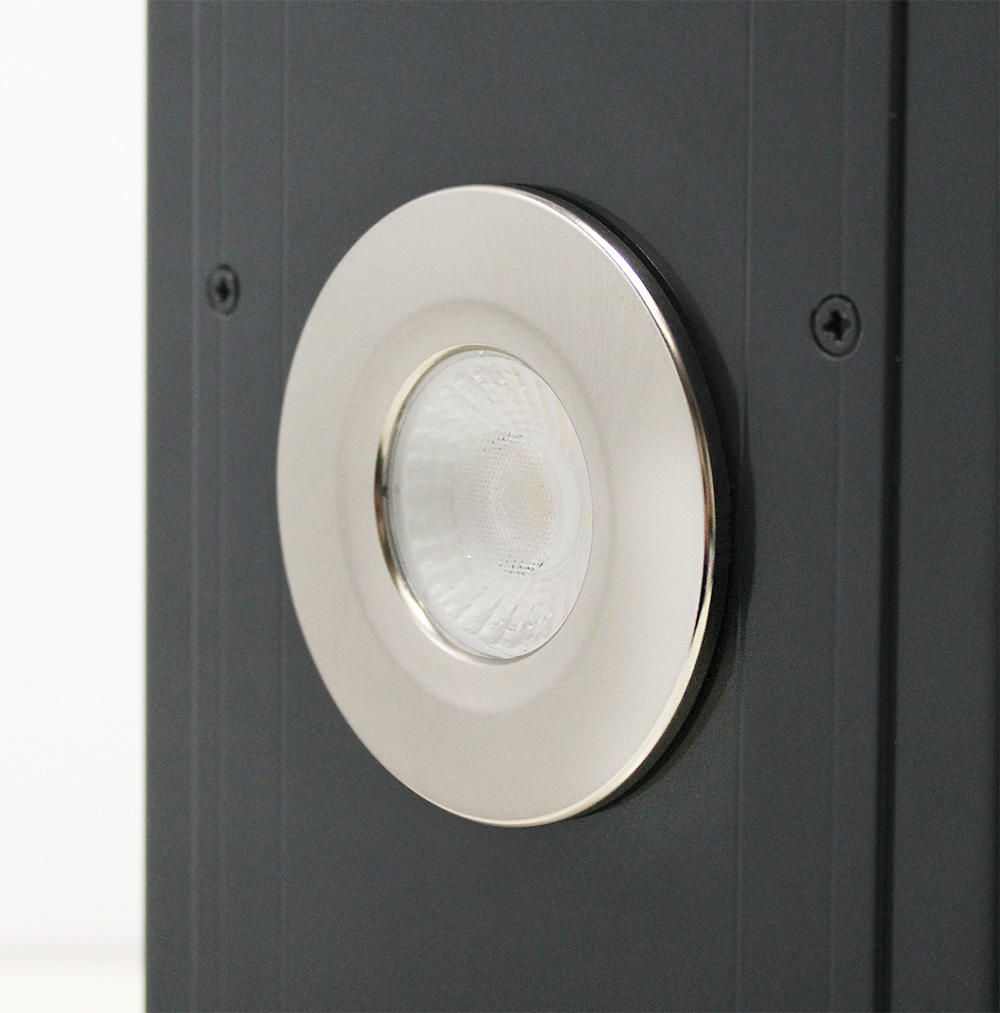
2. Spot Lighting
Spotlights are the exact opposite to flood lights in that they are designed to brightly illuminate a small area, such as a projecting double sided sign, a wall mounted message or menu panel. They project an intense amount of light from a fairly close range so as to really make the little sign ‘pop’.
Ideal Applications:
Small Signs: Signs smaller than 1 sq metre look very good when very brightly lit by a small spot light.
Projecting Signs: Double sided projecting signs also benefit from the targeted beam of light and in such cases the lights can be mounted on the wall or on small arms fixed on the sign bracket.
3. Trough Lighting
This is a inverted ‘U’ shaped trough which houses one or more LED strips all the way along its length. The LED sign lights are designed to be wall mounted above a long fascia sign and evenly light it up without any ‘hot spots’ usually associated with flood fights or decorative lights.
Our trough sign lights are made to measure, usually within a couple of days, and can be configured in a number of ways to best suit your specific requirements:
- Any length from 200mm to 20 metres and more.
- Two levels of brightness.
- Optional photocell switch fitted for automatic on/off use.
- Three shades of white light – cool white, daylight, and warm white.
- Mounting brackets to fit every requirement.
- Available in RAL colours.
- Very easy to fit, but they will need to be connected by a suitably qualified electrician.
Further customisation such as colour changing lights, digital running lights etc. are possible and will further attract attention.
Ideal Applications:
Illuminating Fascia Signs
Illuminating Double Sided Projecting Signs
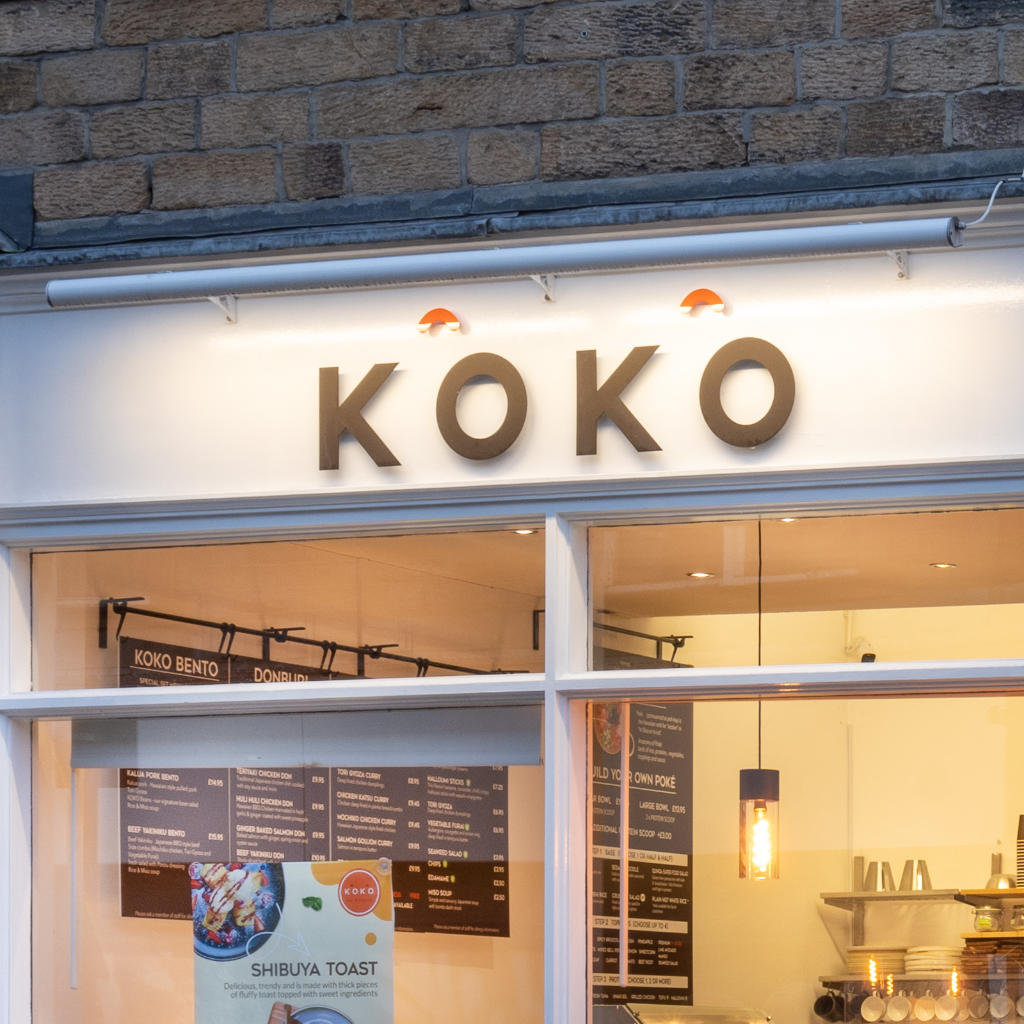
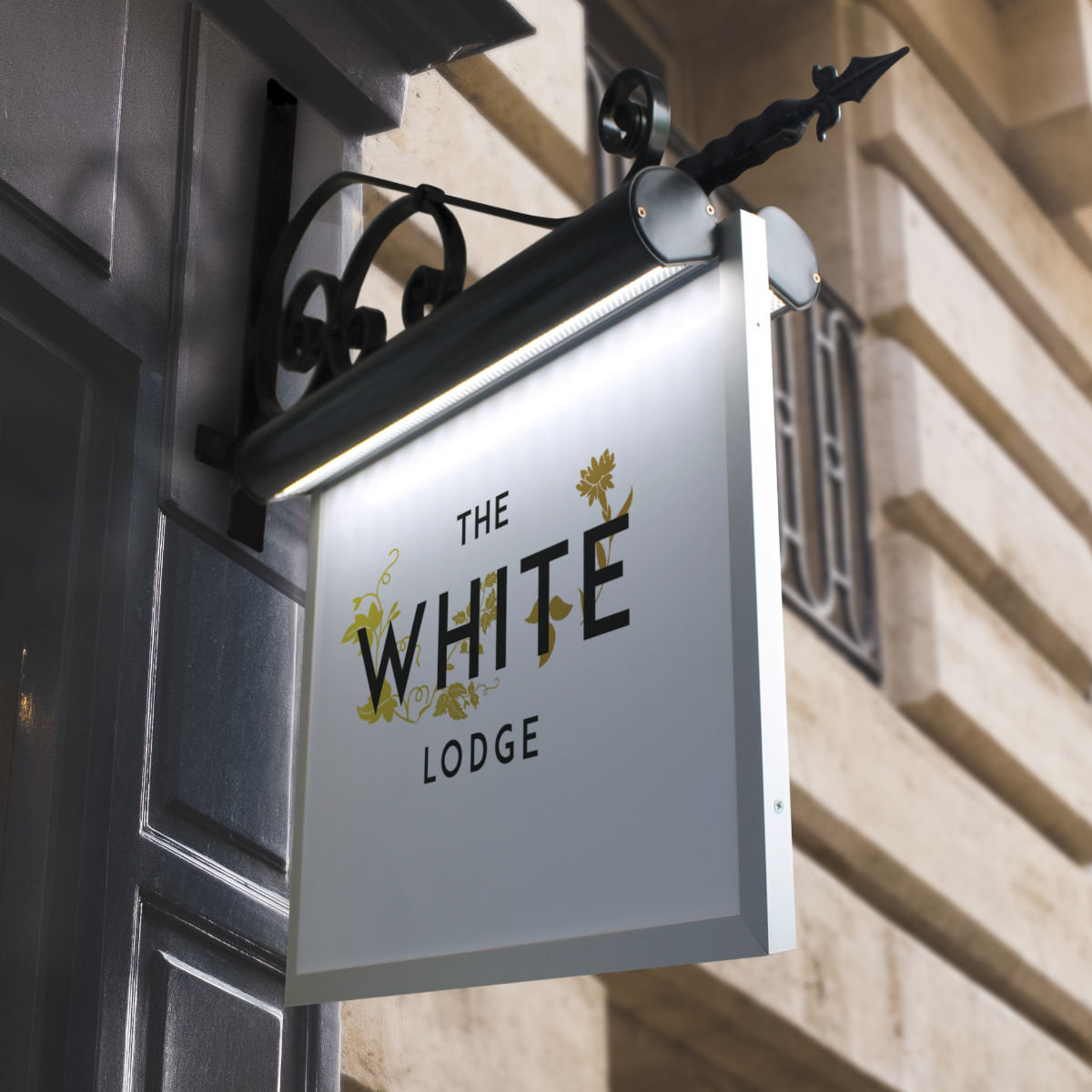
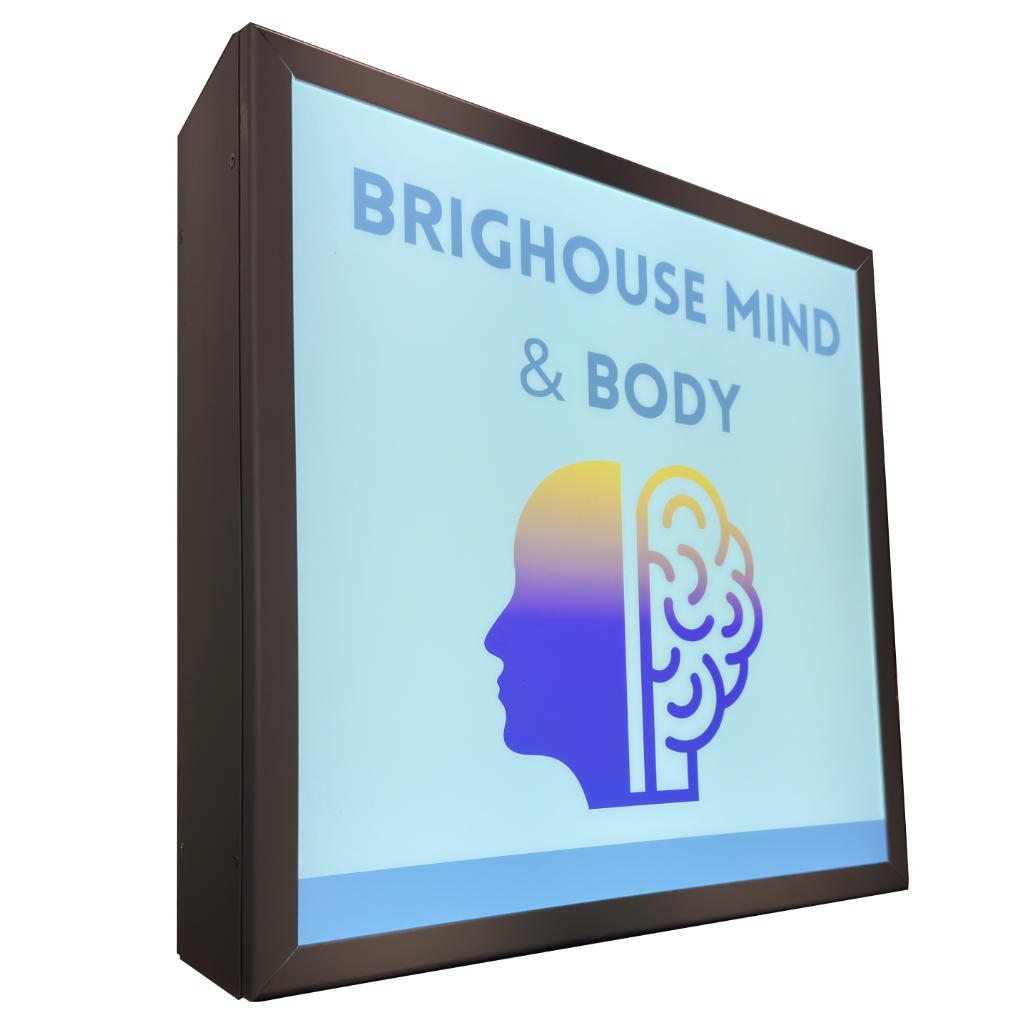

4. Internal Sign Lighting
Internal sign lighting features an acrylic sign panel with a design on the front, mounted on a light box and illuminated from behind. This projecting light box sign creates a large bright image. Usually this would be rectangular for ease (& to reduce cost) of manufacture, but what can be achieved it’s only limited by your imagination and your budget.
In these lightbox signs, the lighting comes from LED Modules mounted on the internal back panel of the sign, pointing at the acrylic panel.
This type of sign is beginning to lose favour with planning departments for high street use in some local authorities.
For example, in the area that we are based in the North West of England, Lancaster is a ‘Heritage’ town with a castle, a priory and 2 conservation areas in the town centre. You are highly unlikely to get planning permission there, but just a few miles away, in Morecambe, which is a seaside town and a little more brash, so an lightbox sign might be considered by the same planning authority.
If you’ve got an existing light box that is in reasonable condition structurally but the electrics are no longer working, we offer a LED replacement kit that’s very easy to fit. (see images below)
Simply provide us with some measurements (and ideally some photos) and we’ll make you a panel to go inside your sign. It will include the LED modules and drivers, wired up and tested. Either you or your contractor can then remove the old tubes/wiring, screw the new panel into the back of your light box and make the electrical connection.
This repair is a fraction of the cost of a new light box sign and because it’s not a new installation, no new planning permission is required.
Ideal Applications:
Large signs, particularly in out of town locations.
Our single sided light box LED upgrade kit - replace fluorescent tubes with energy efficient LEDs.
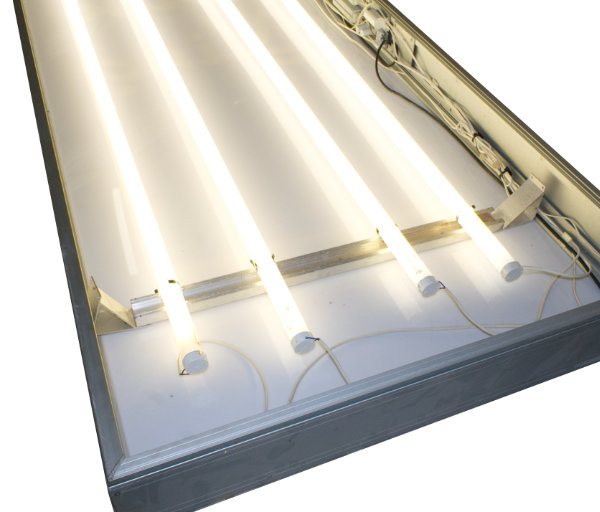
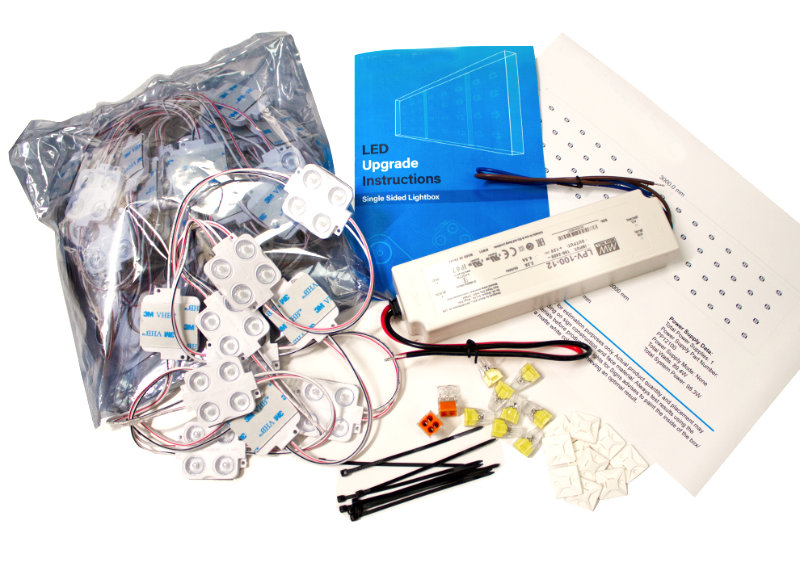
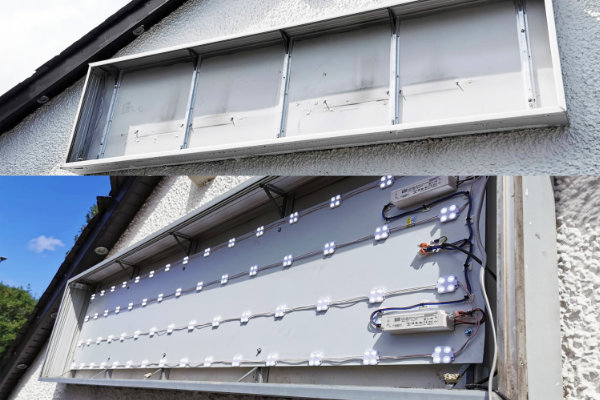
5. Decorative Lighting
Decorative lighting tends to be used where the style of lighting is just as important as the fact that the sign needs to be seen clearly.
You may have a themed bar or restaurant with lots of interesting memorabilia and your sign reflects that style, so to have the appropriate decorative lighting will appeal to your customers.
All these lights will take LED bulbs but it must be said that they are not as durable outdoors as most other forms of lighting. They will have a low IP rating meaning that they will be more prone to weather damage and in our experience, lights mounted along the front of shops or near windows can easily be damaged by ladders from window cleaners.
They are though statement lights and they can look great in the right setting.
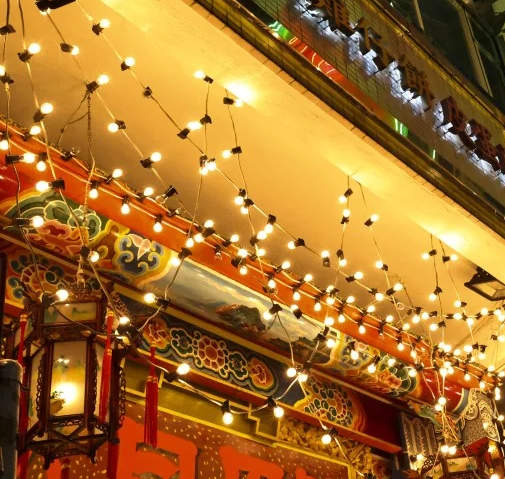
Image Credit: K.Y.Cheng
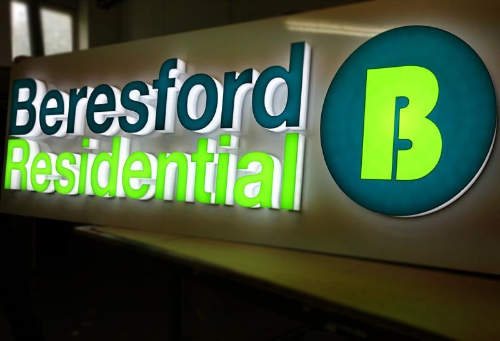
Image Credit: Promo Signs
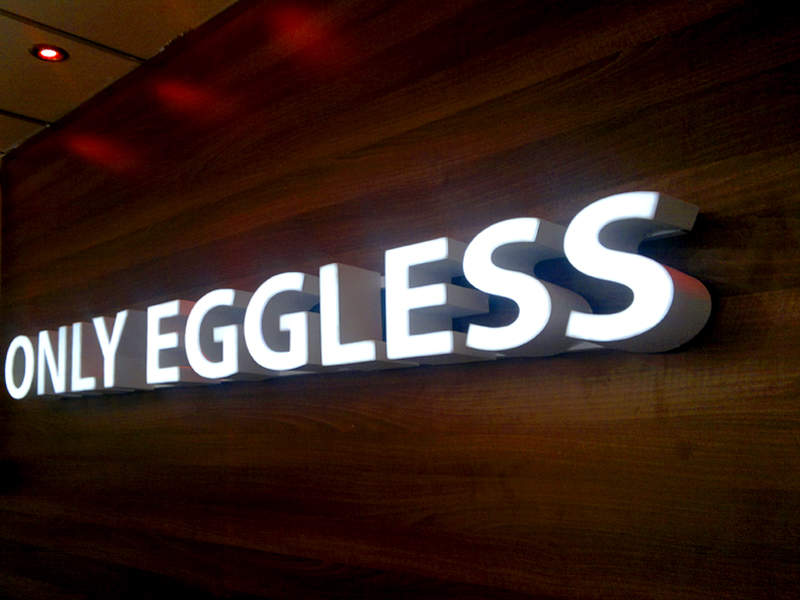
Image Credit: Promo Signs
6. Illuminated Letters & Logos
Illuminated channel letters and logos are built up in 3D and involve installing lights inside each of the letters, which are then individually fixed to a background or wall.
There are two basic types:
Halo lighting, where the light comes out of the back of the letter, which in turn stand off the background. With this method, the light is cast all around the background of the letter which gives a very subtle and pleasing effect.
The other is known as face lit, where the light comes out from the front of the letter or logo, which are a lot brighter and less subtle.
These types of sign tends to be more expensive as each letter is hand made by a skilled craftsman and the LED lighting inside requires a lot of work to connect and hide all the wires when fixing on site.
The result though is very impressive and suggests quality and established about the business.
Aesthetic appeal: Back lighting is ideal for signs with intricate designs, graphics or architectural elements that you want to emphasise.
Night time ambiance: These lights are great for creating a soft, inviting glow around signs that enhances the overall ambiance of your business.
Self-lit channel letters must be expertly designed and installed.
Ideal Applications:
Storefront Identification: Self-lit channel letters are commonly used for storefront signage, allowing your business name to be prominently displayed.
Indoor Signage: They work well for indoor signage, guiding customers to various sections within your store or highlighting product categories.
Multiple Colours: Channel letters can be customised with various colours, making them suitable for businesses looking to add a vibrant touch to their signage.
